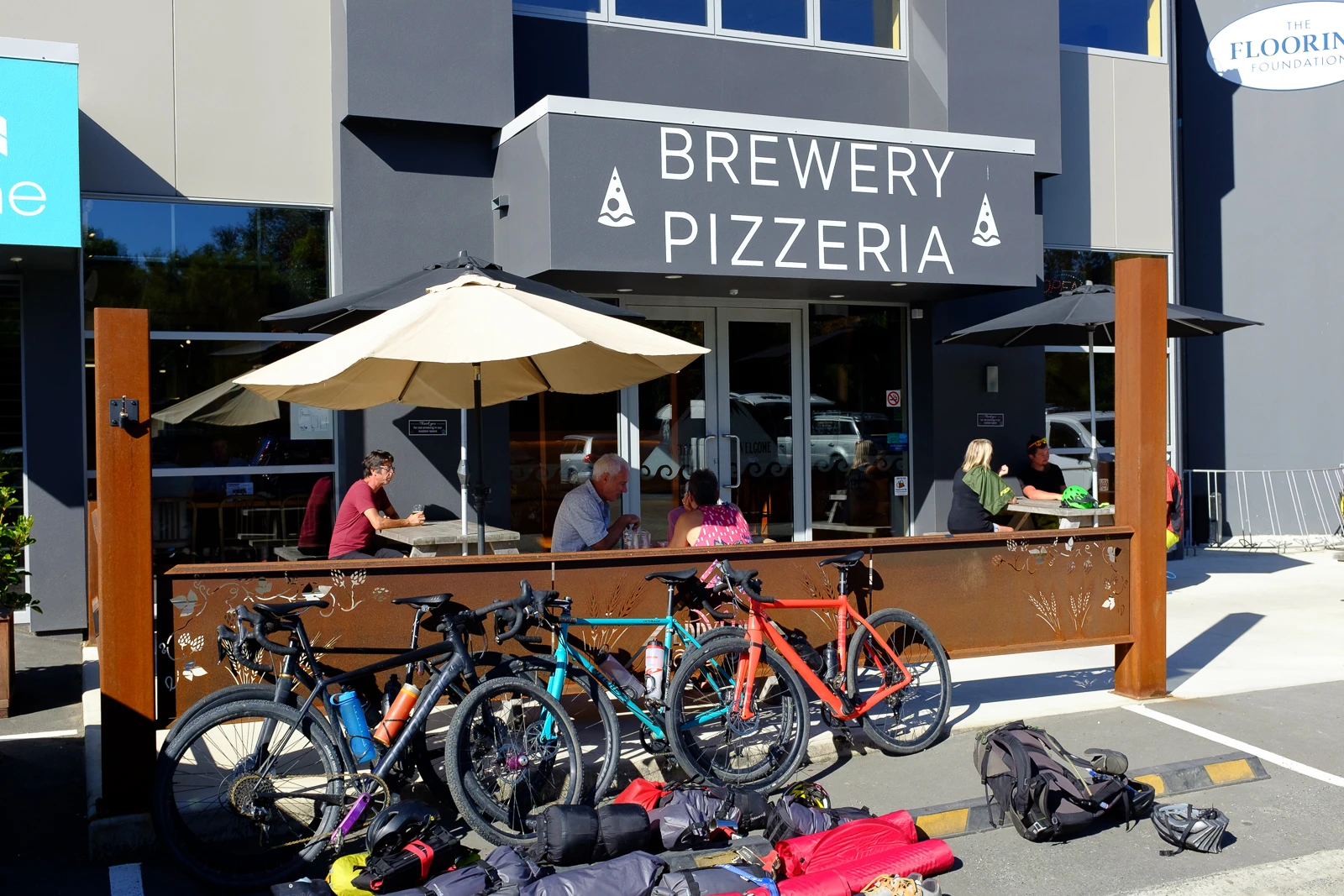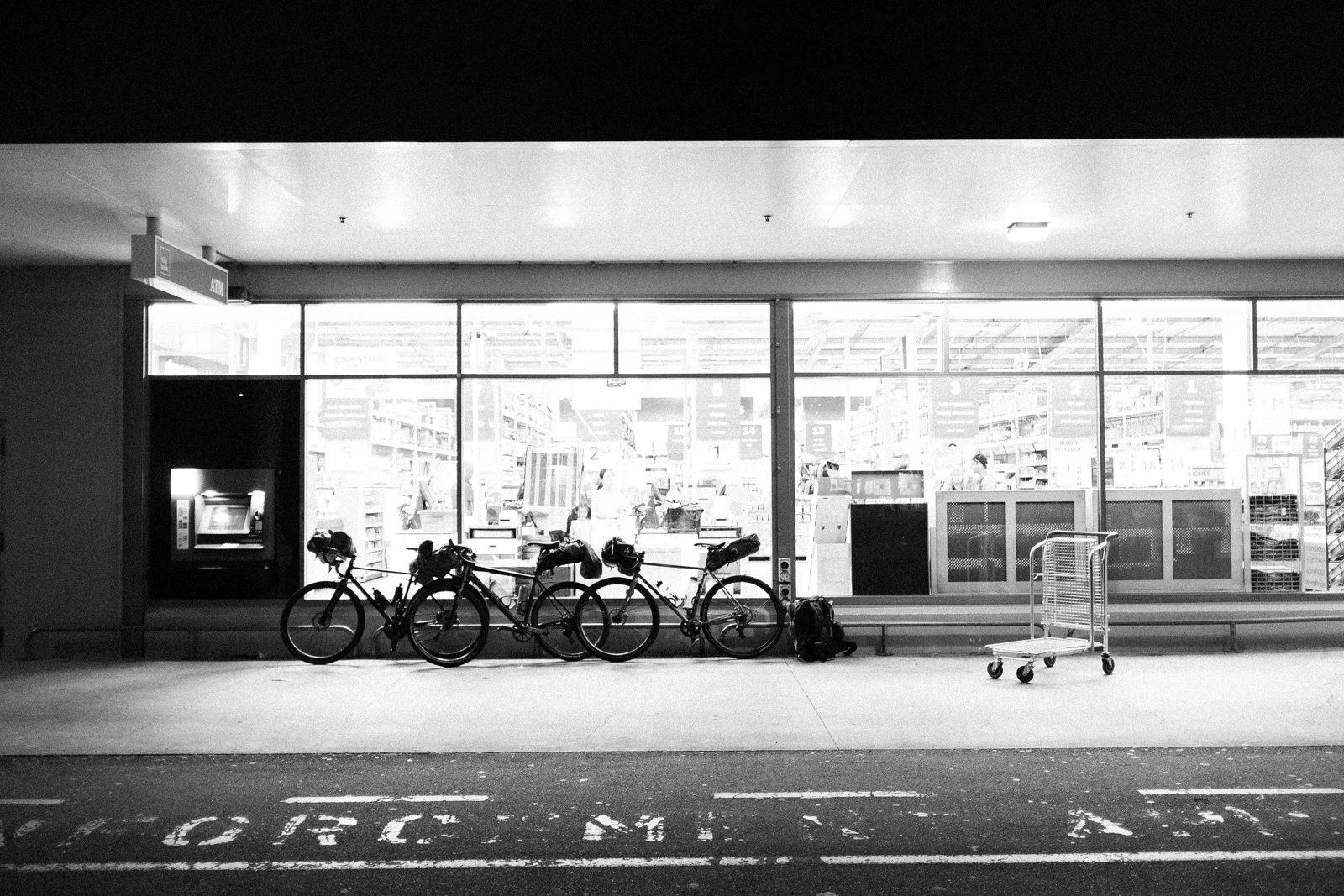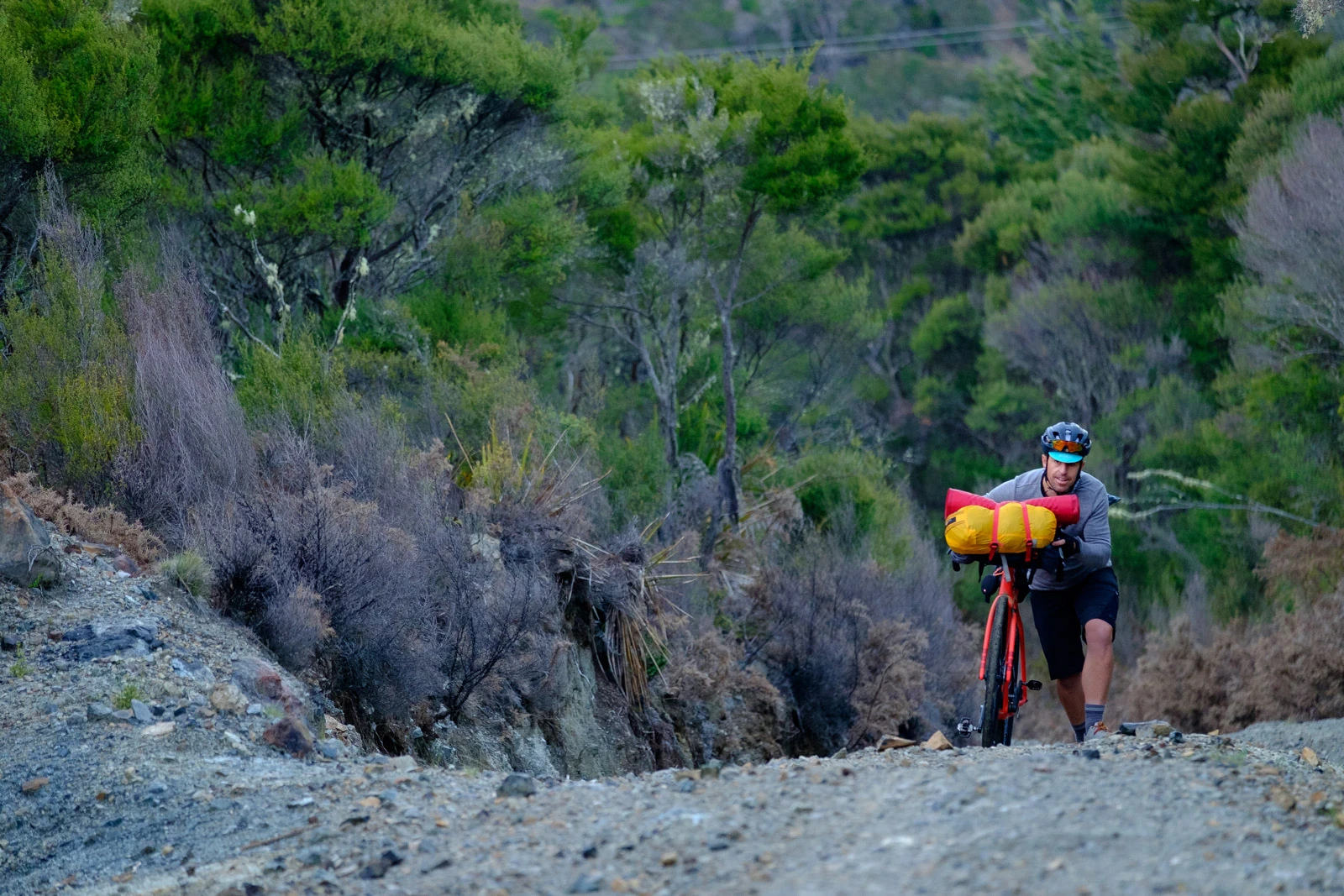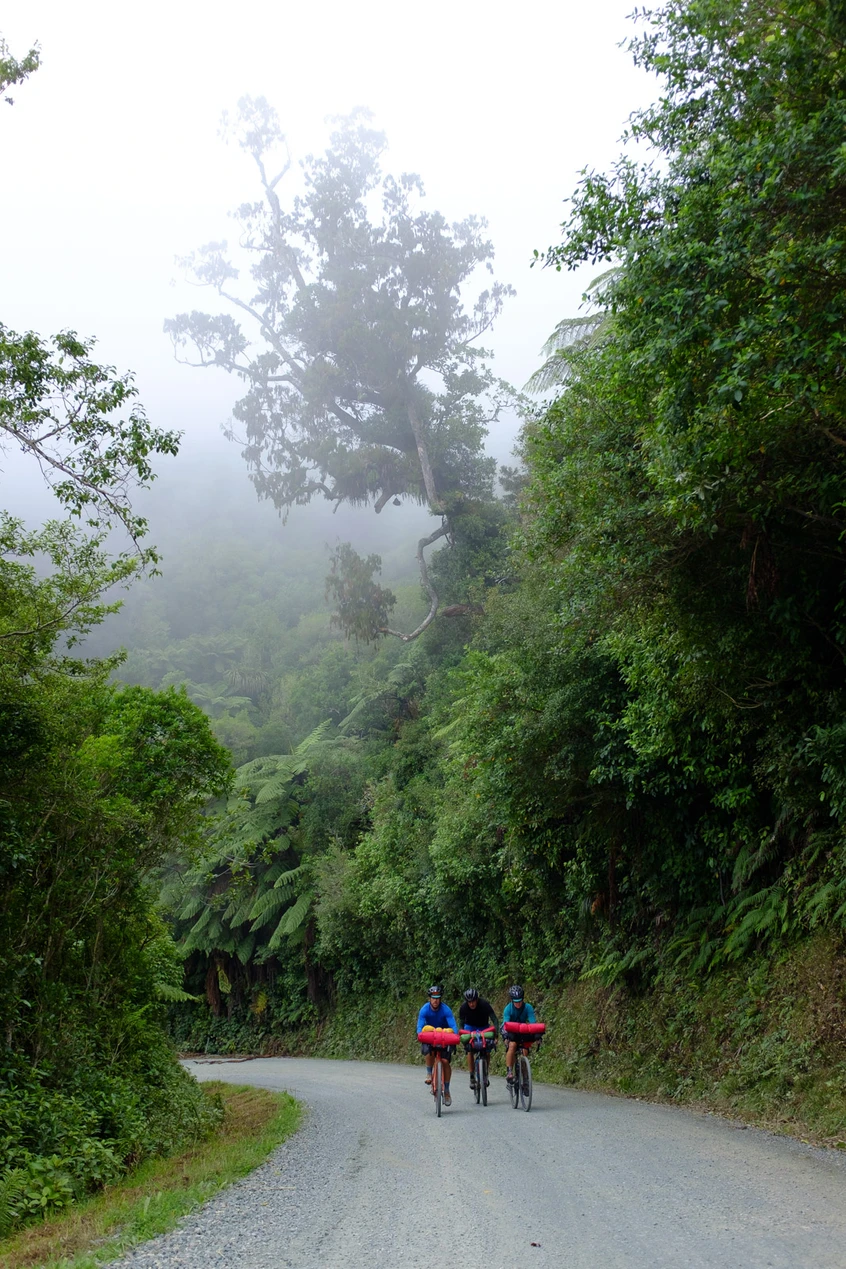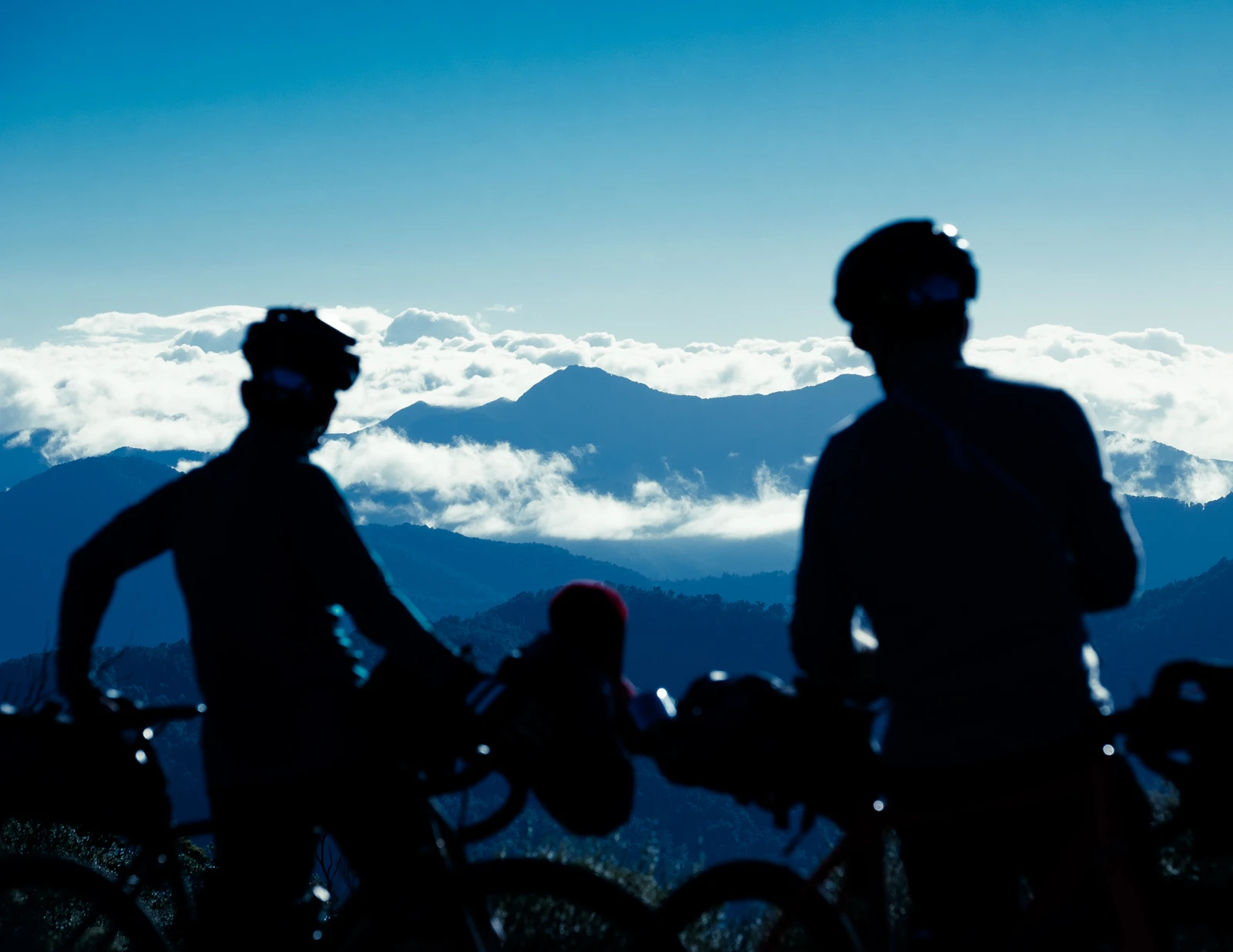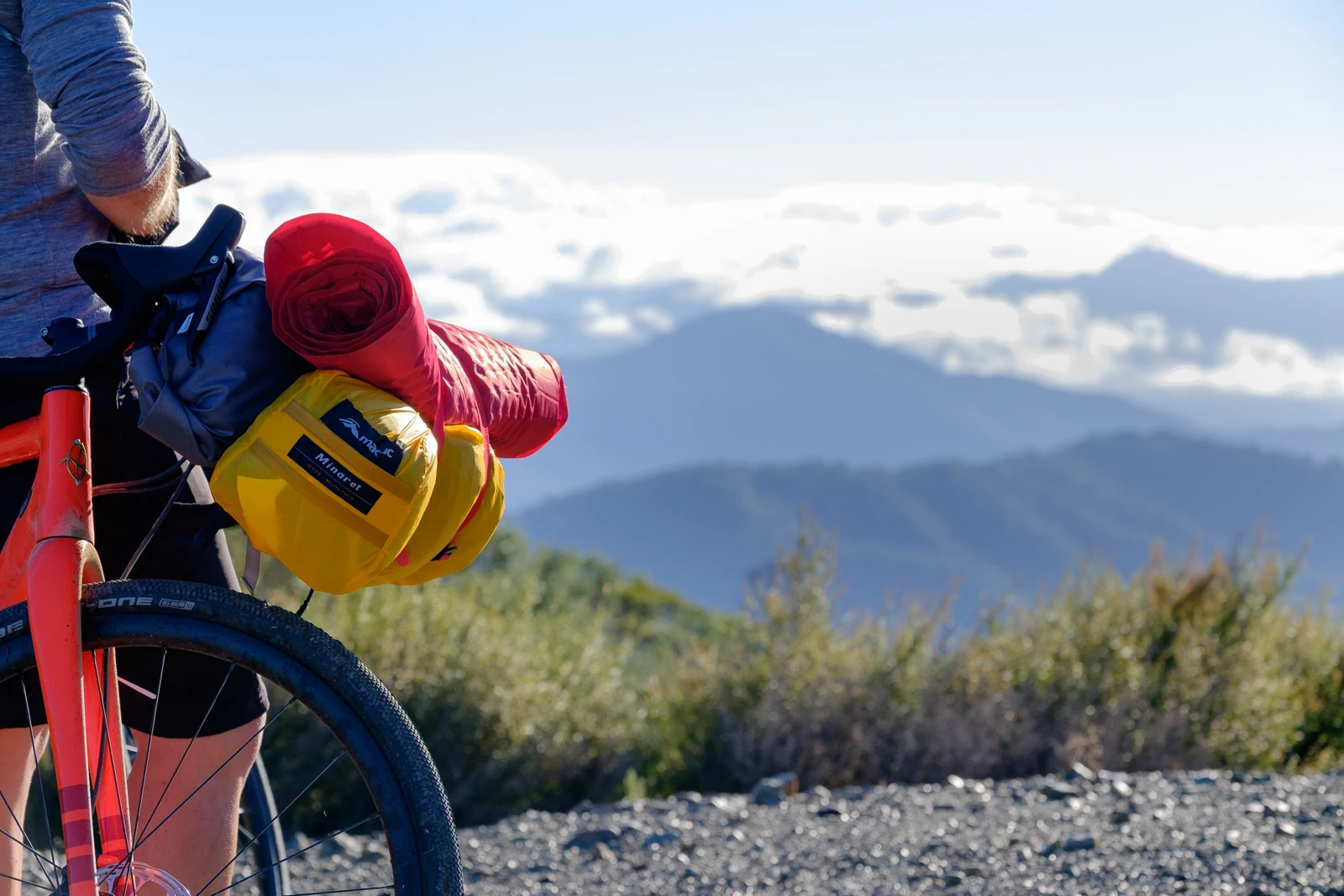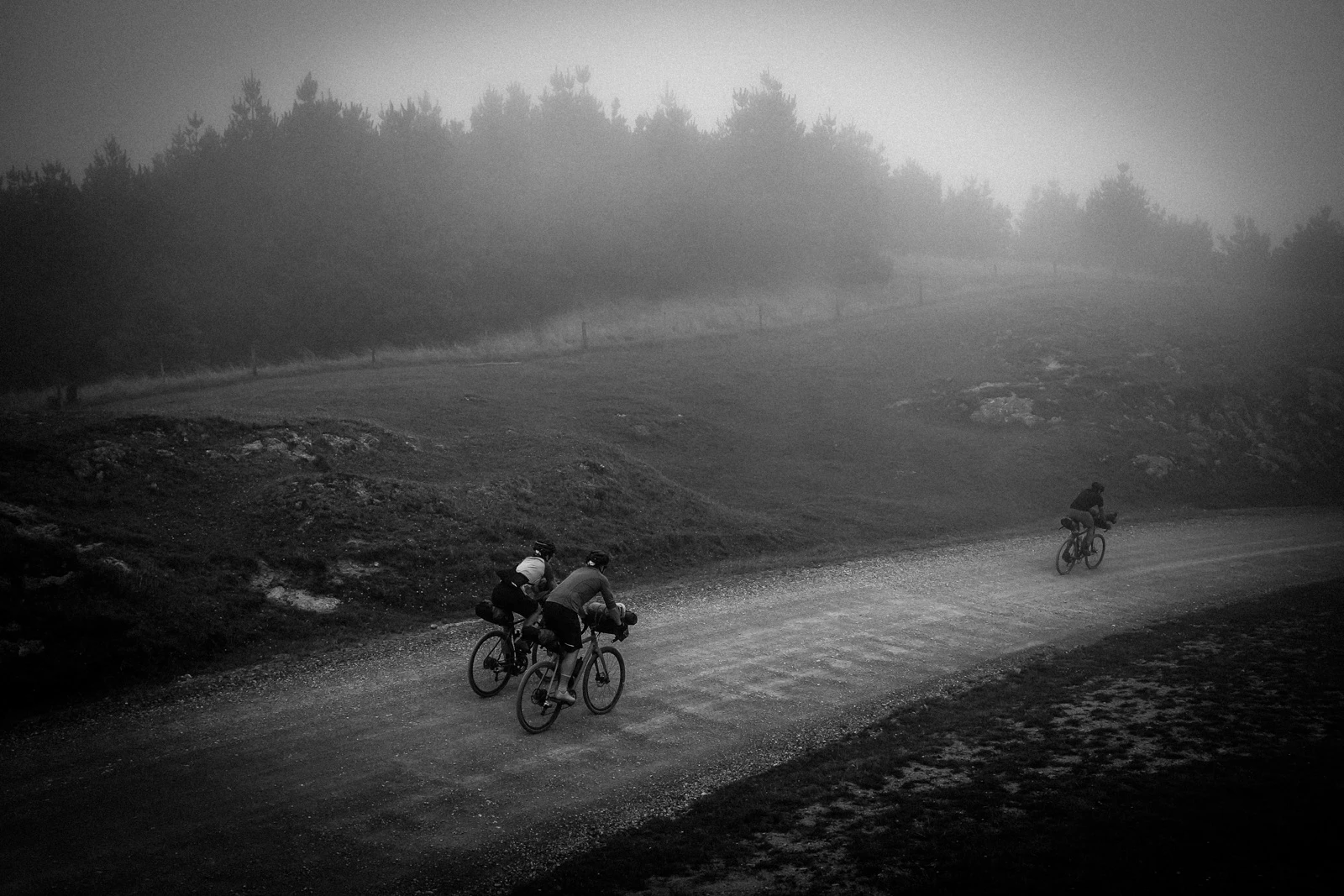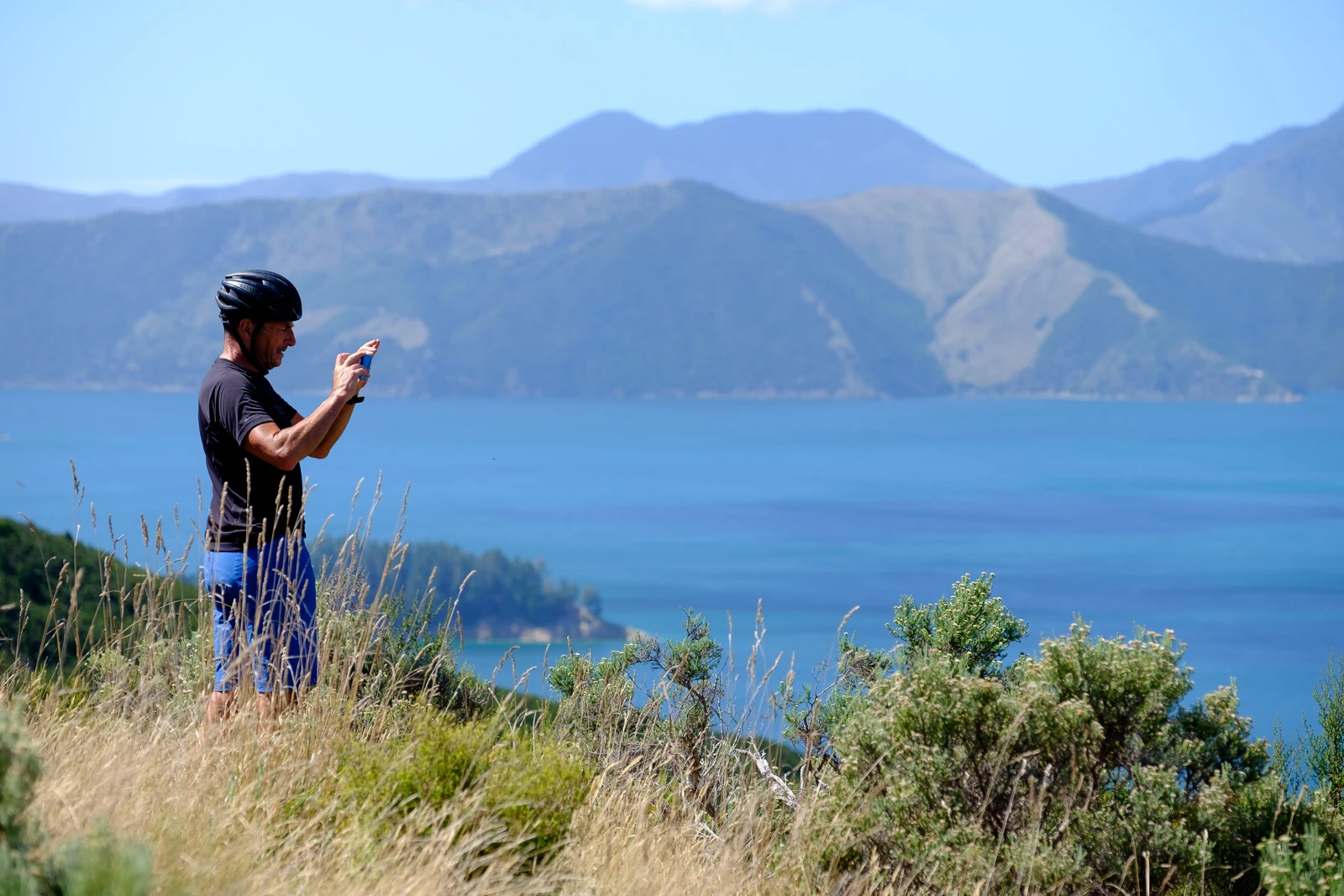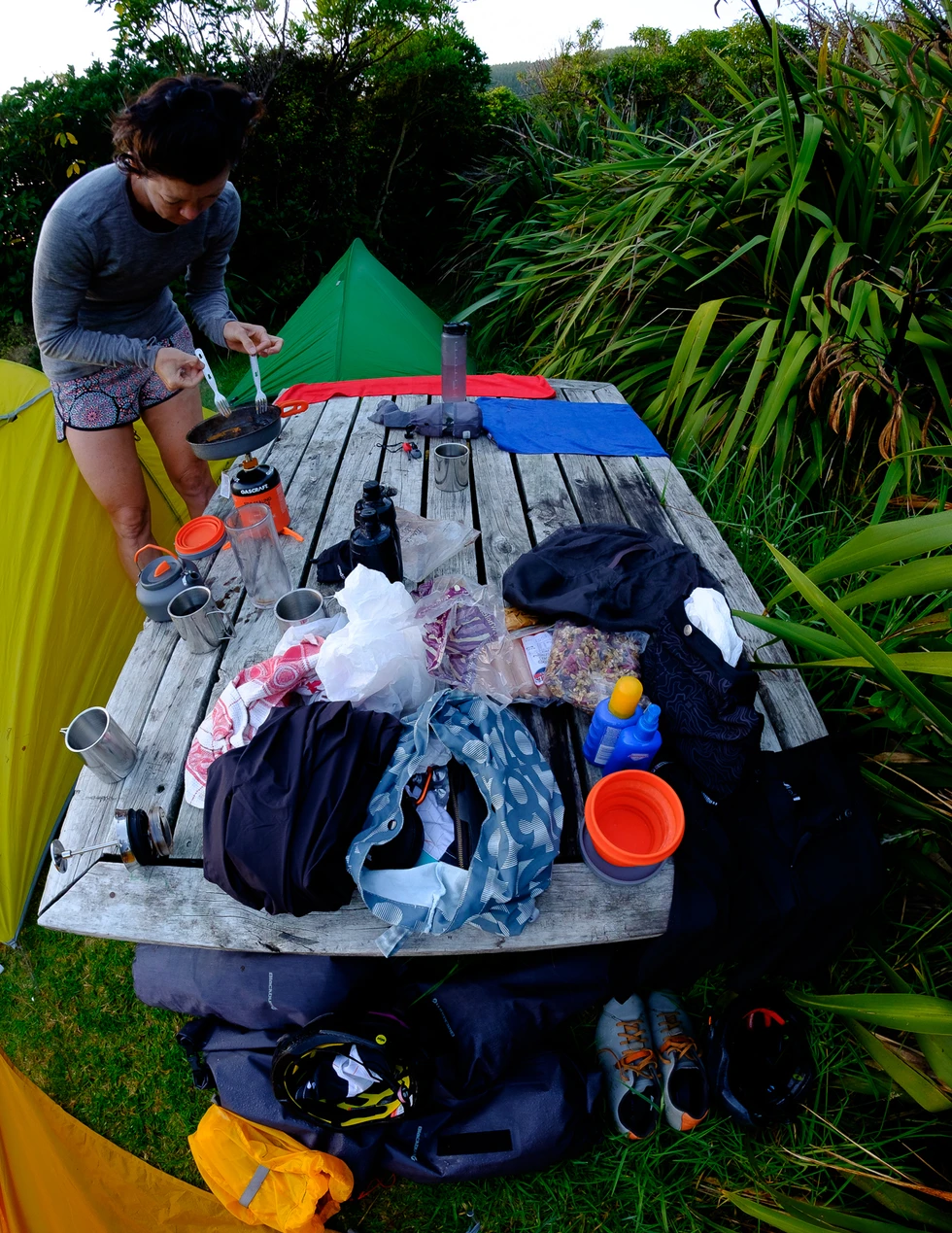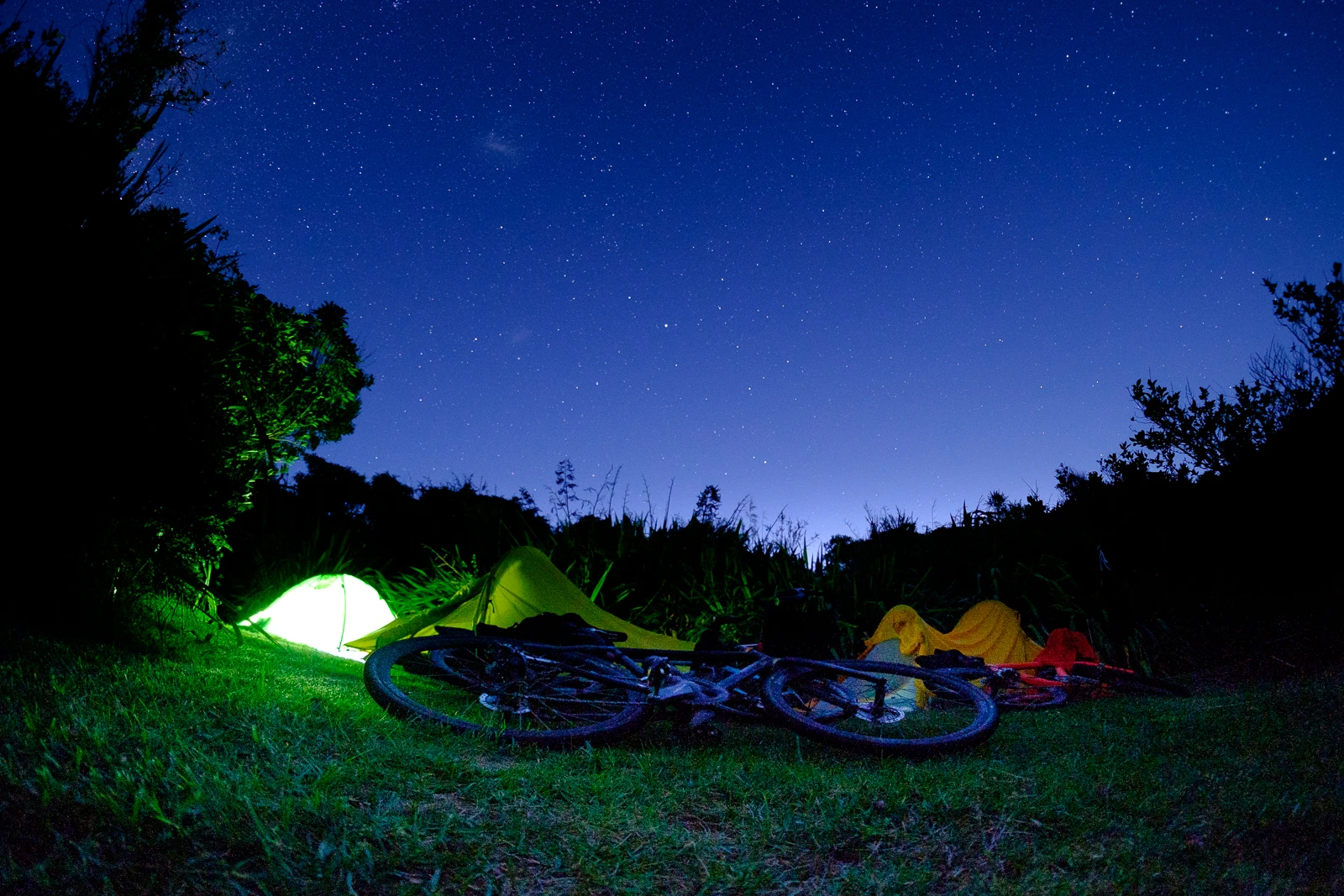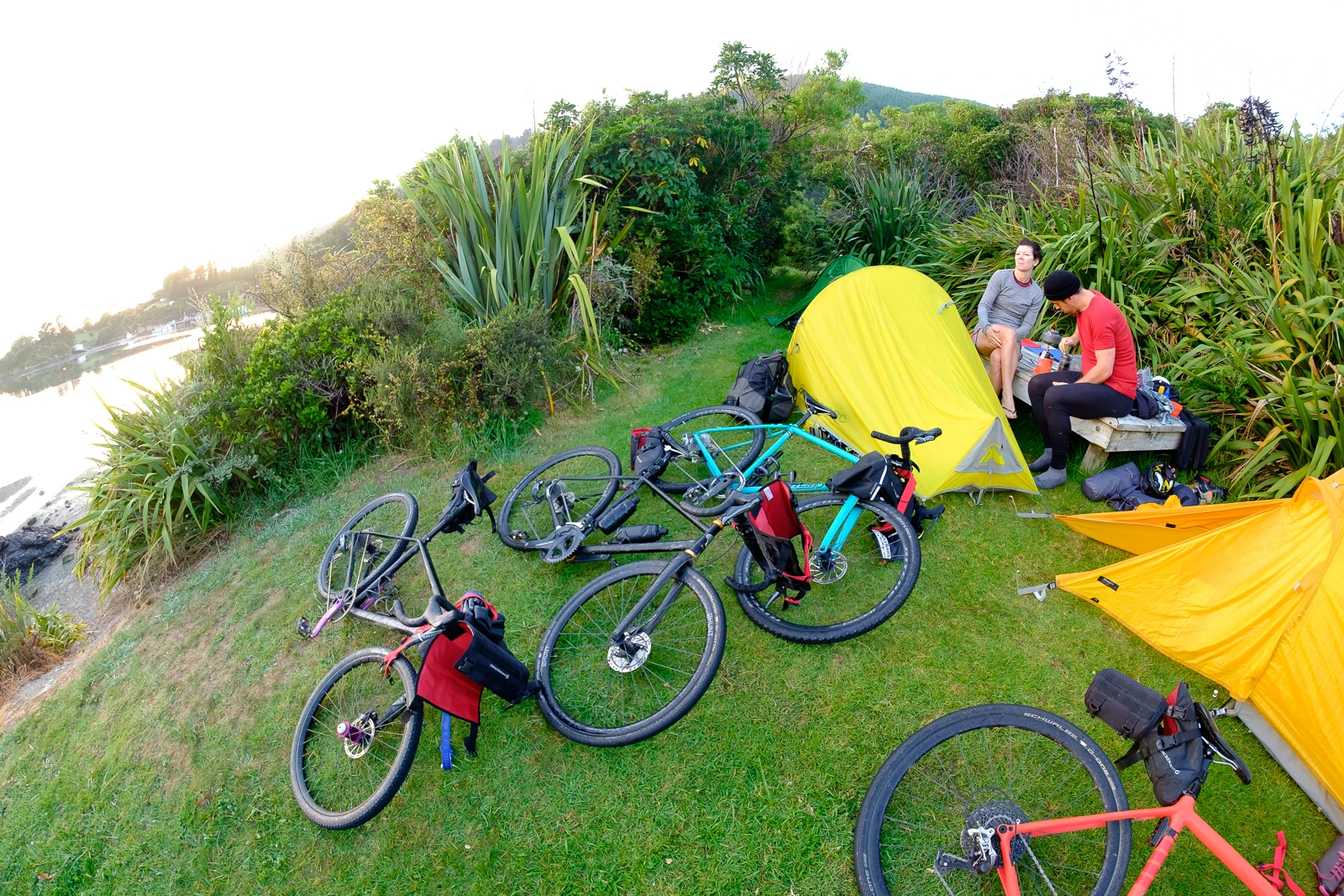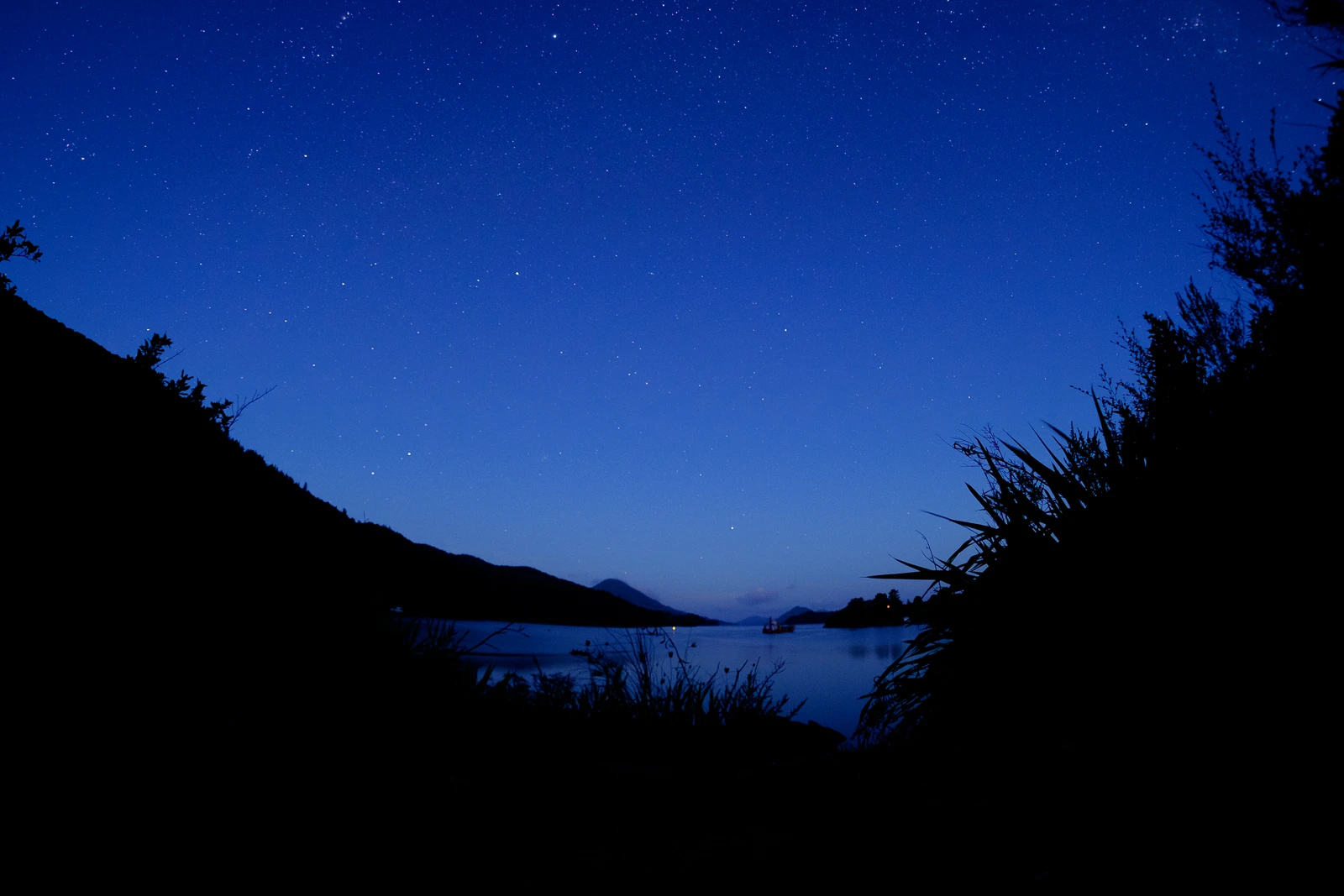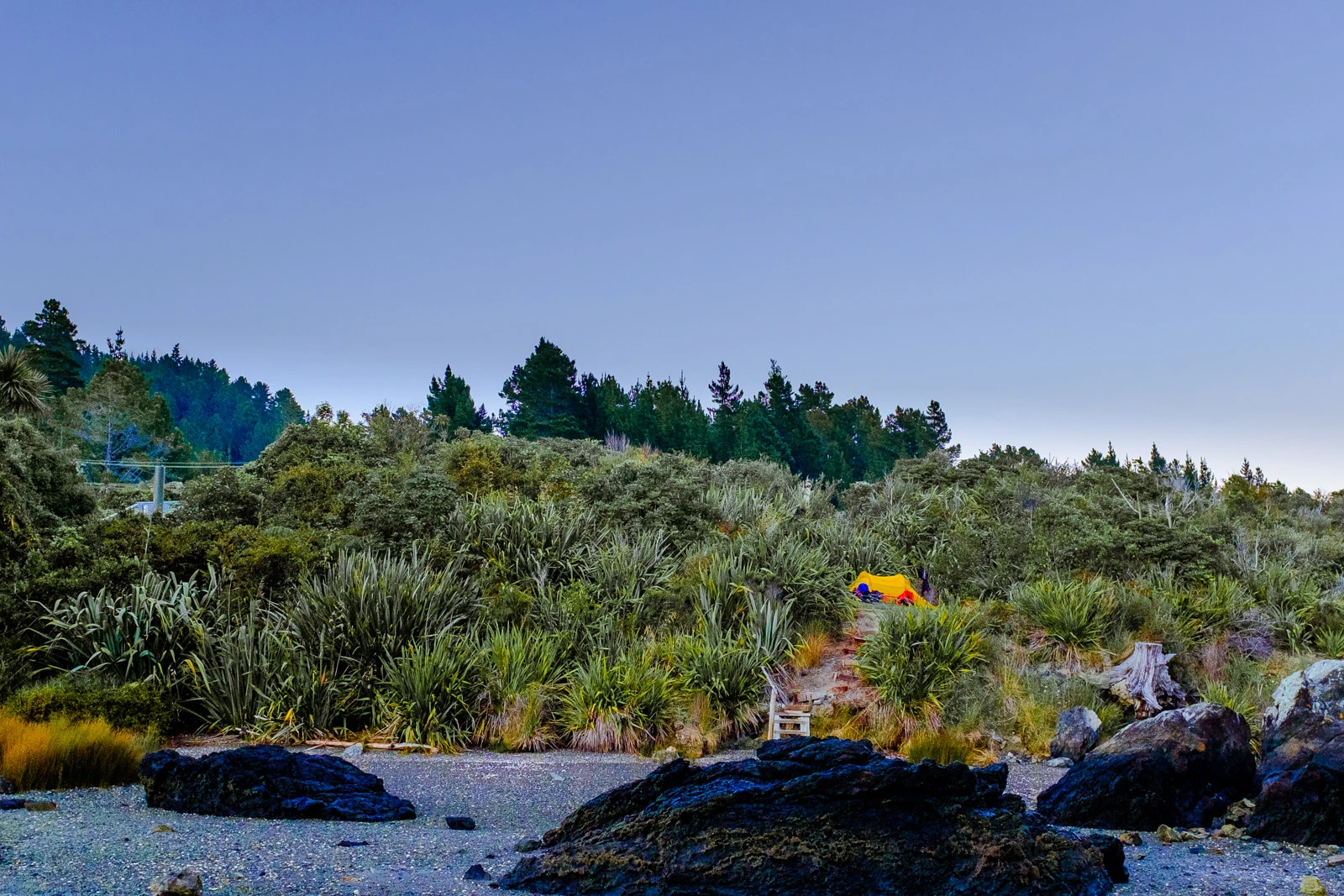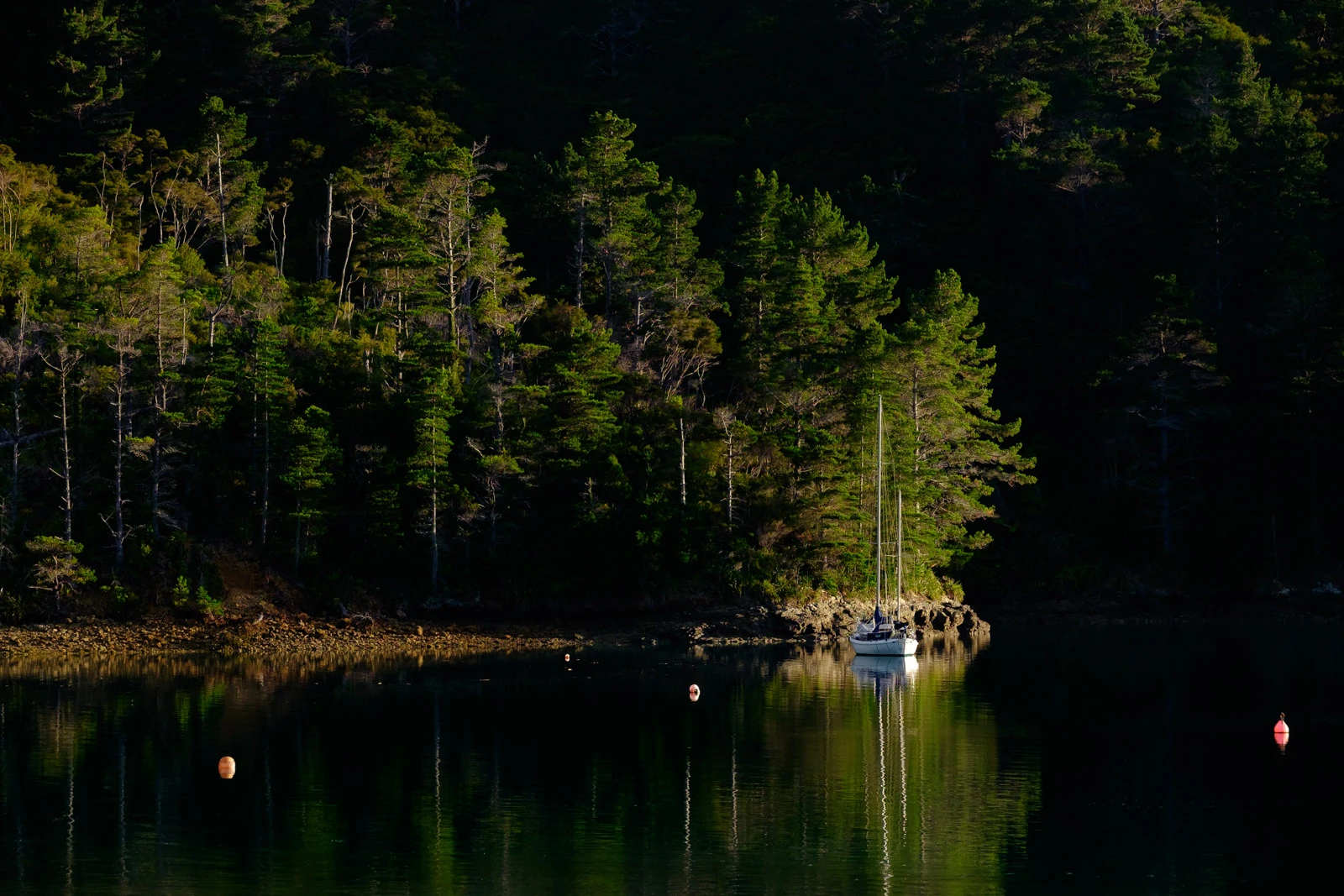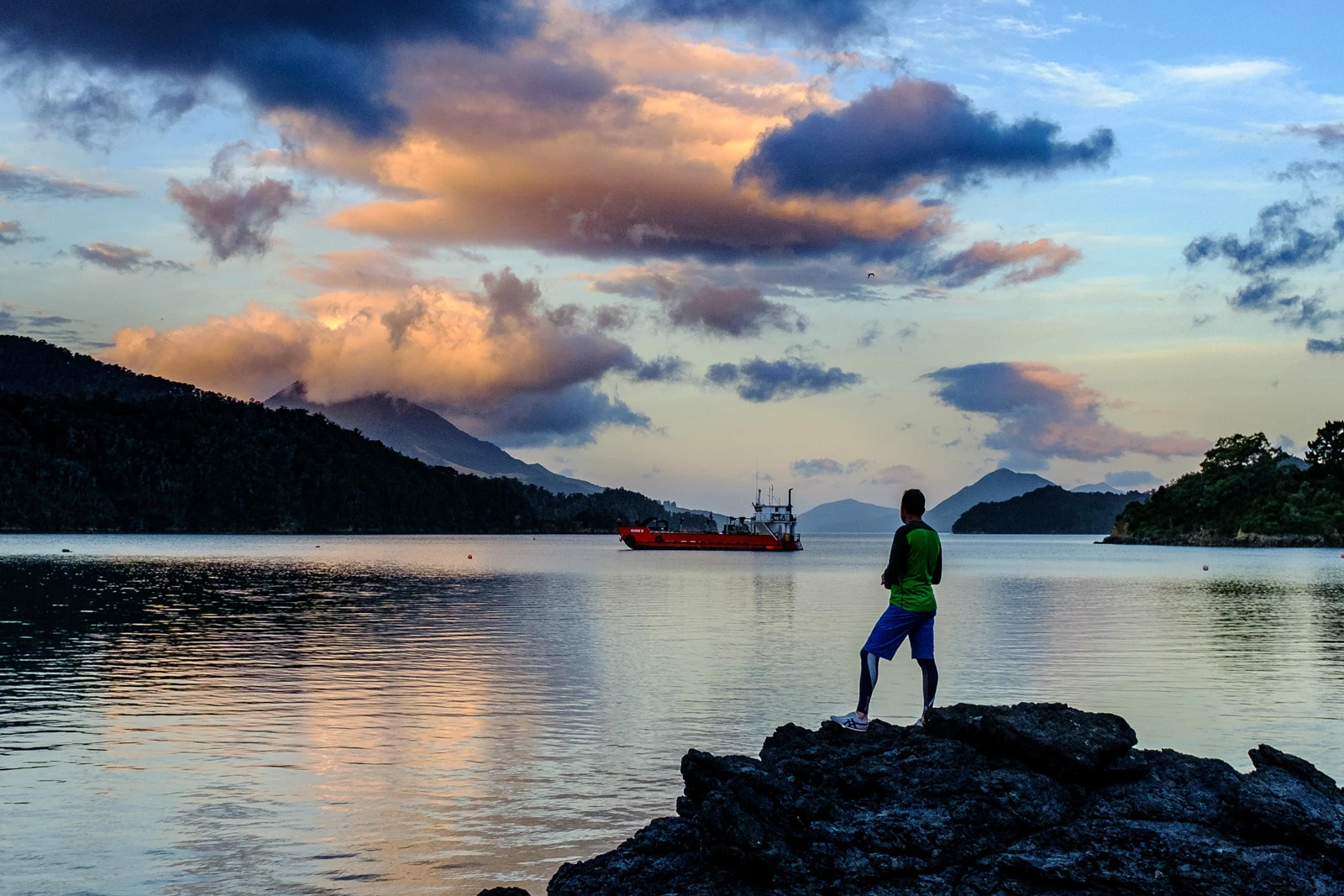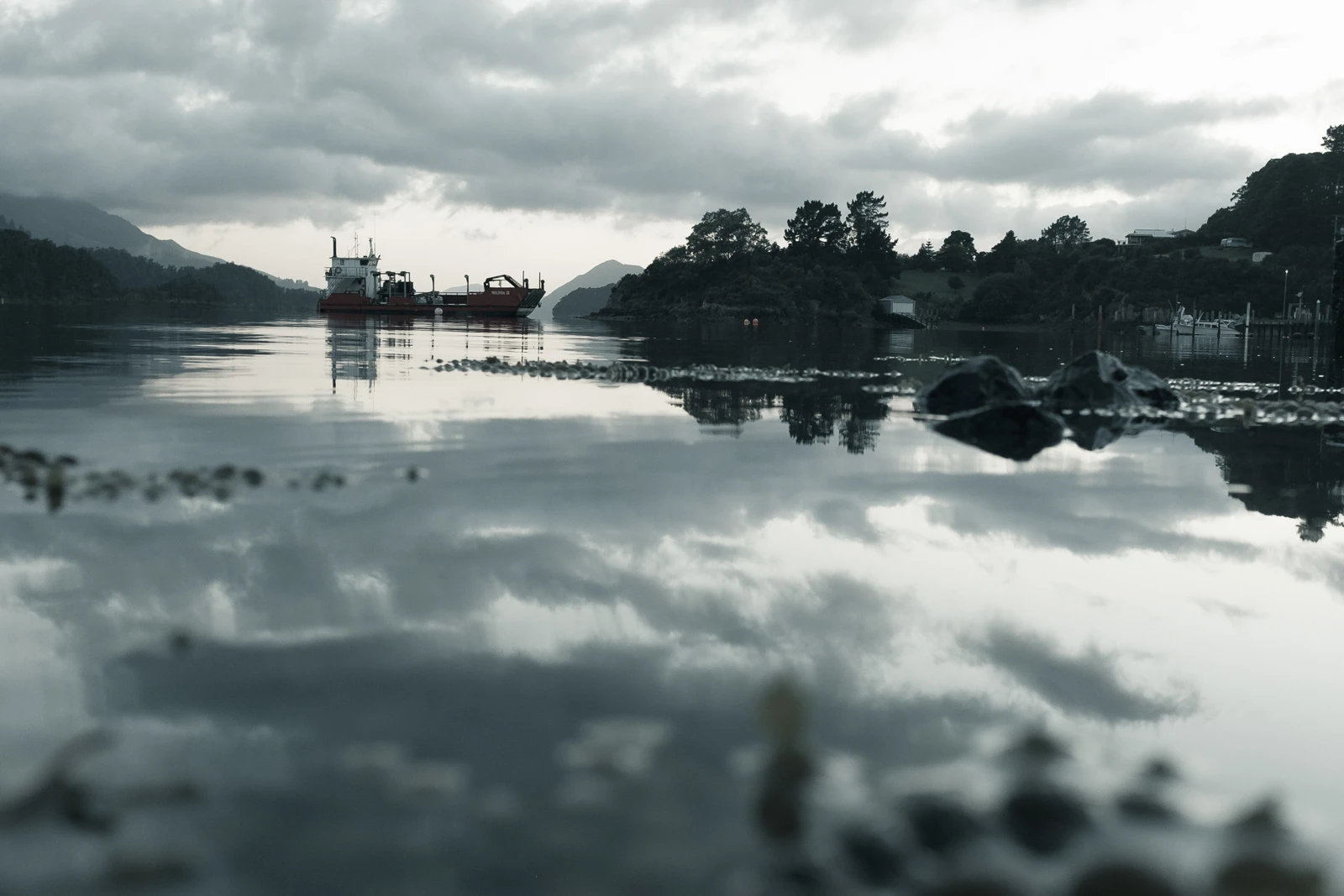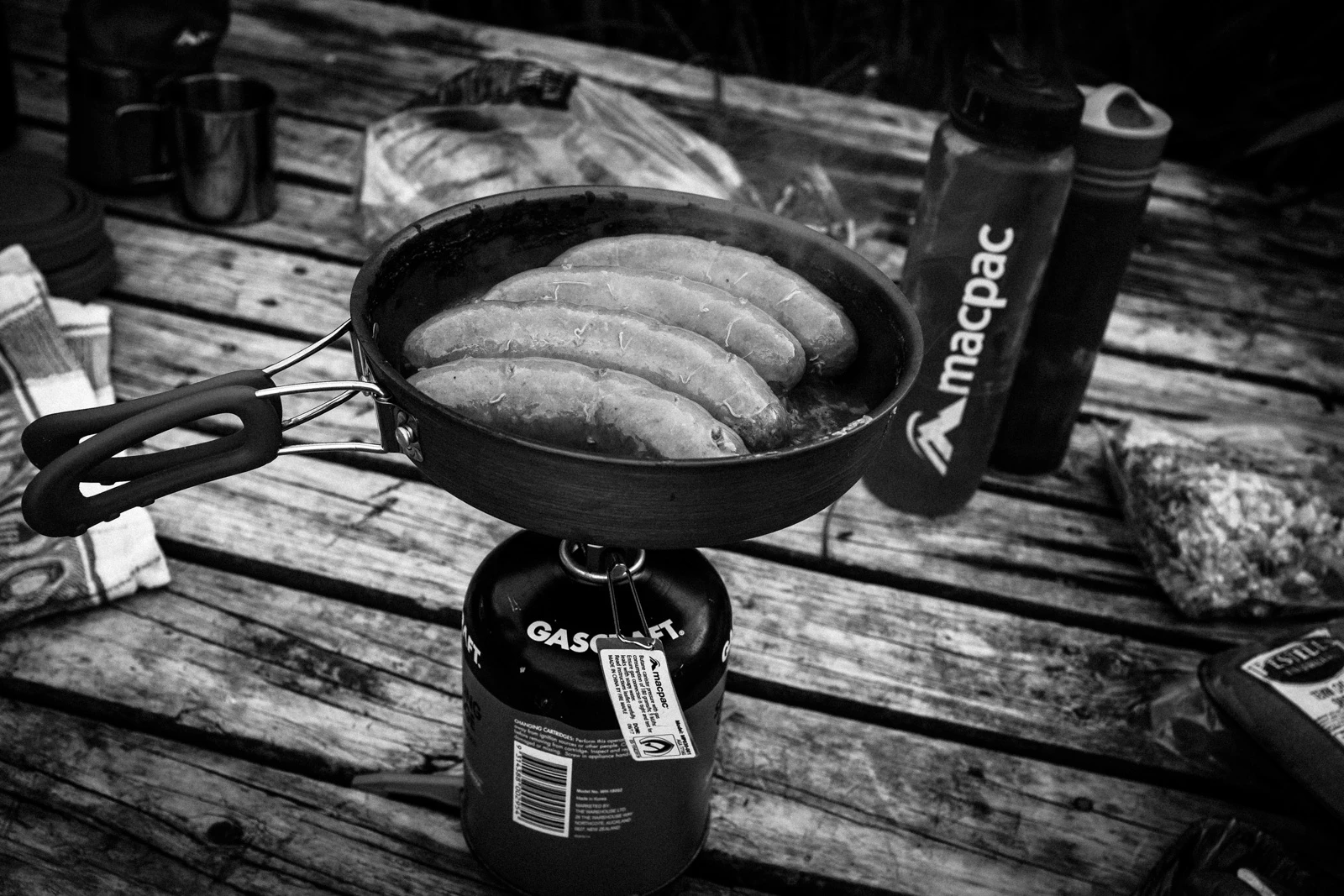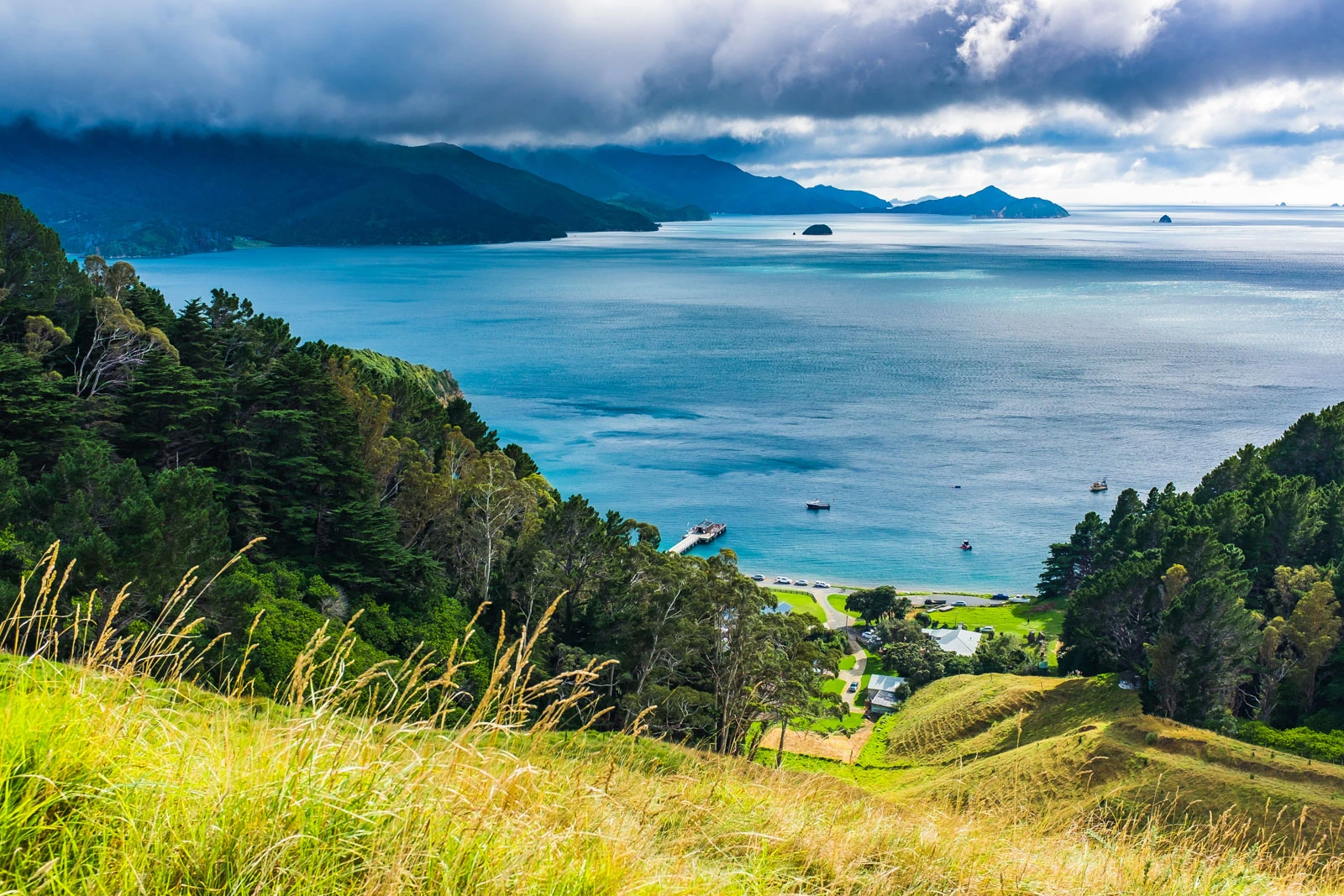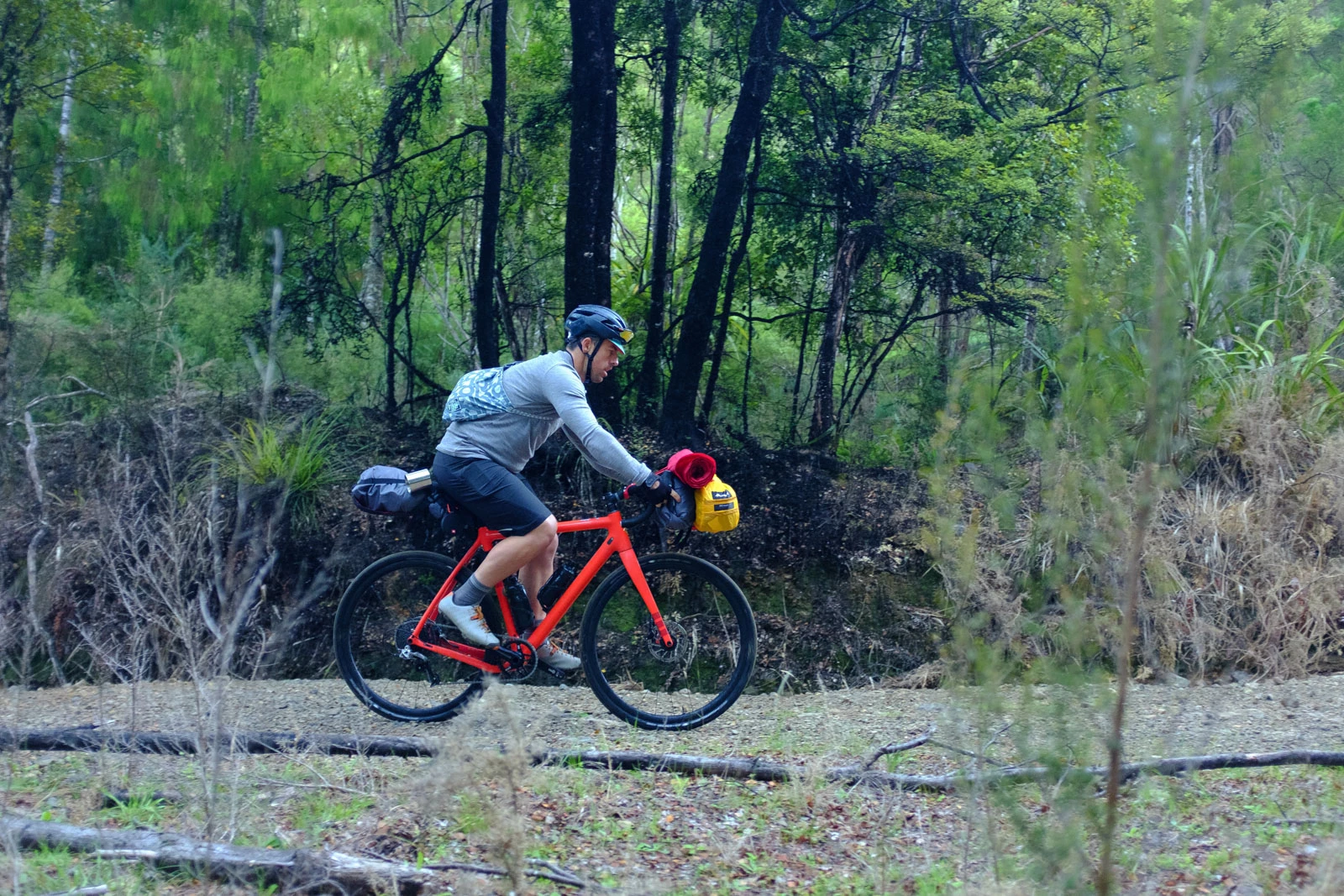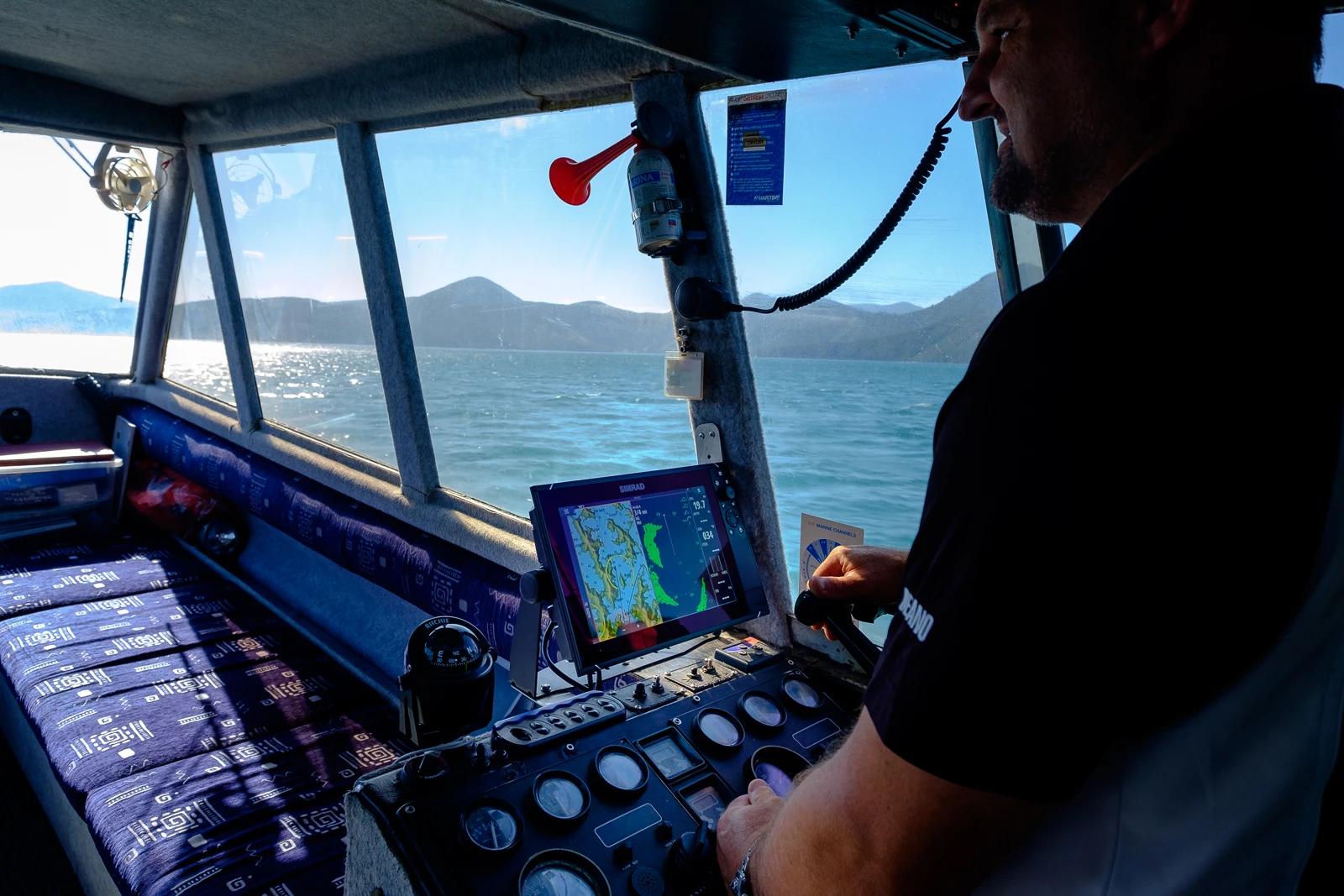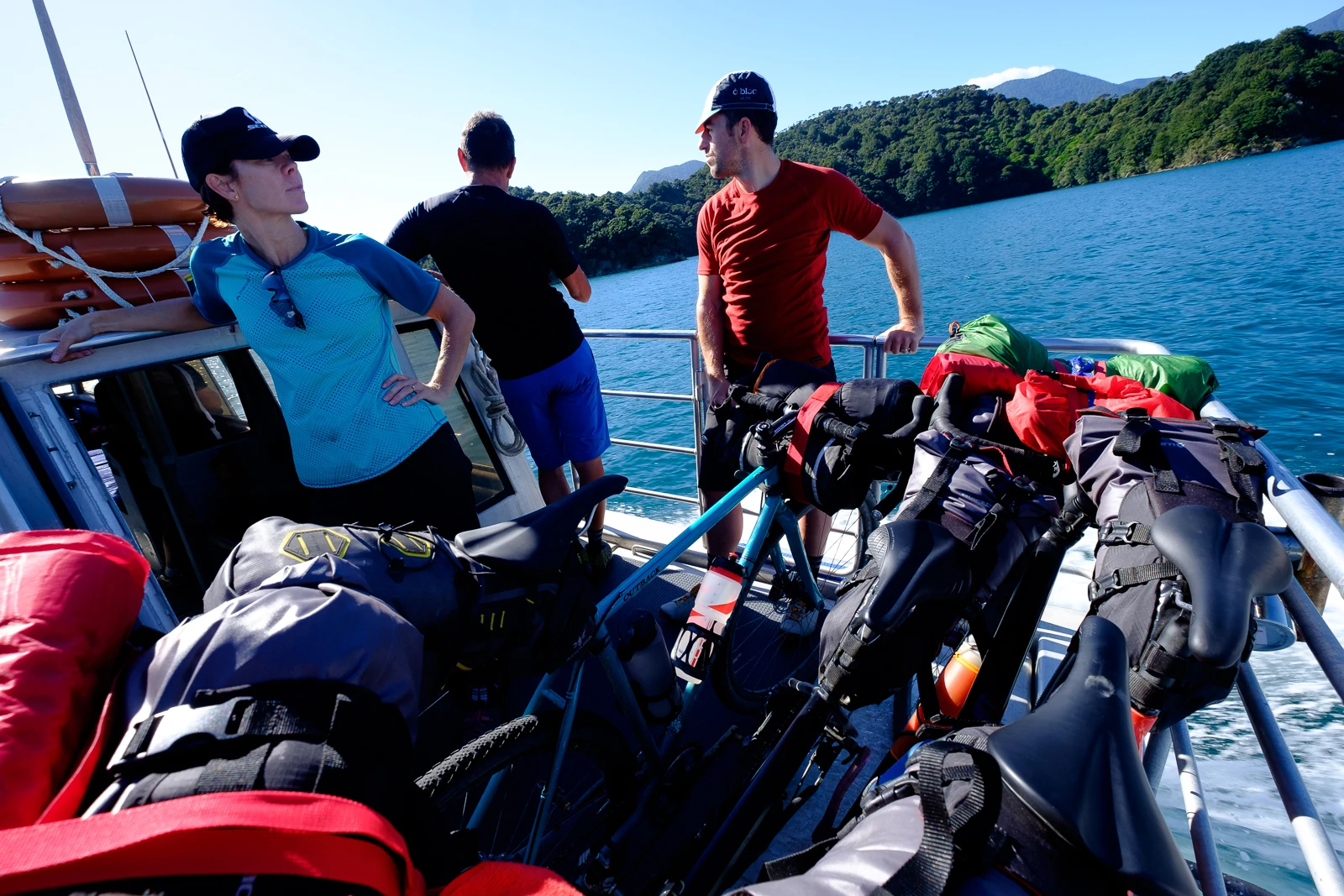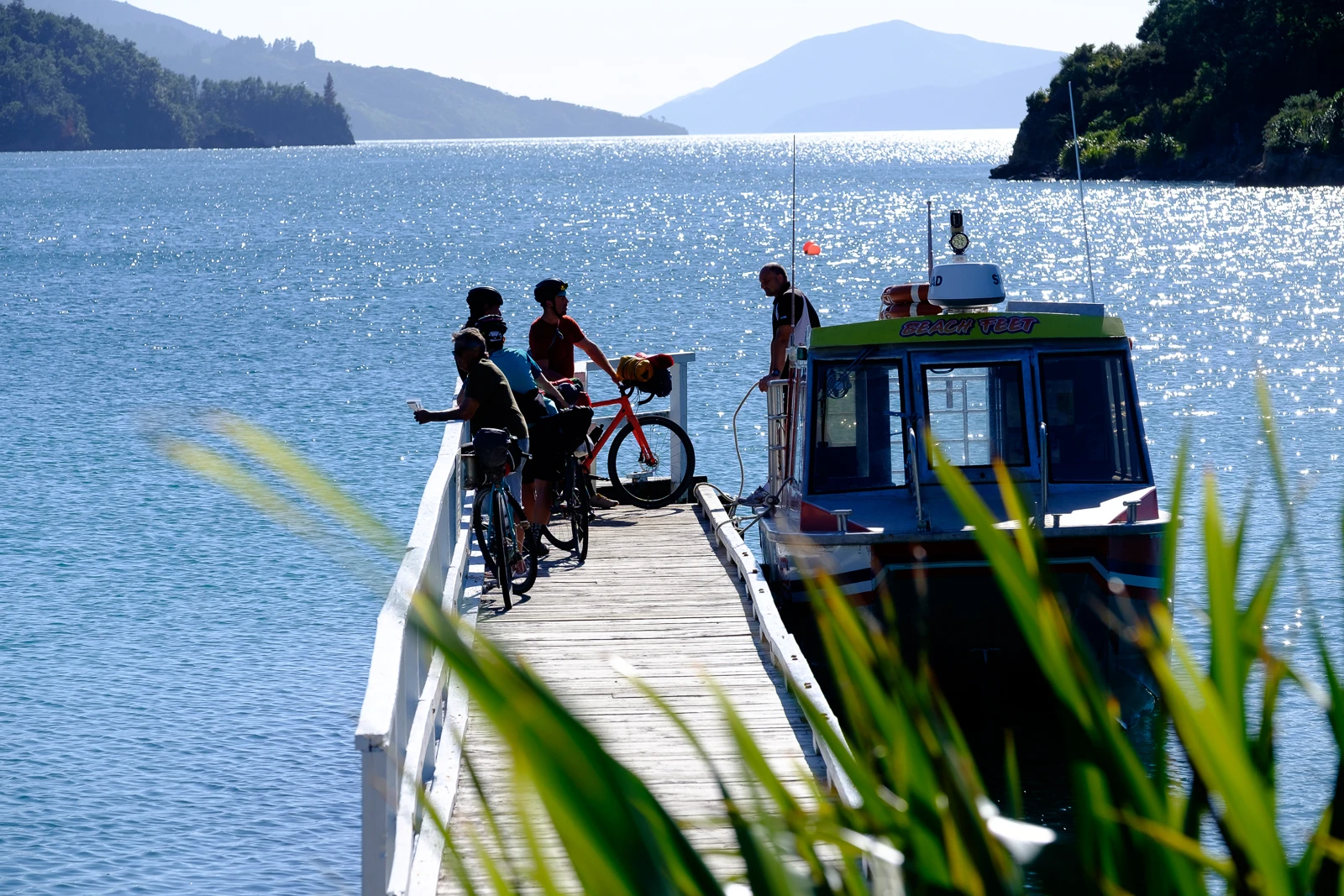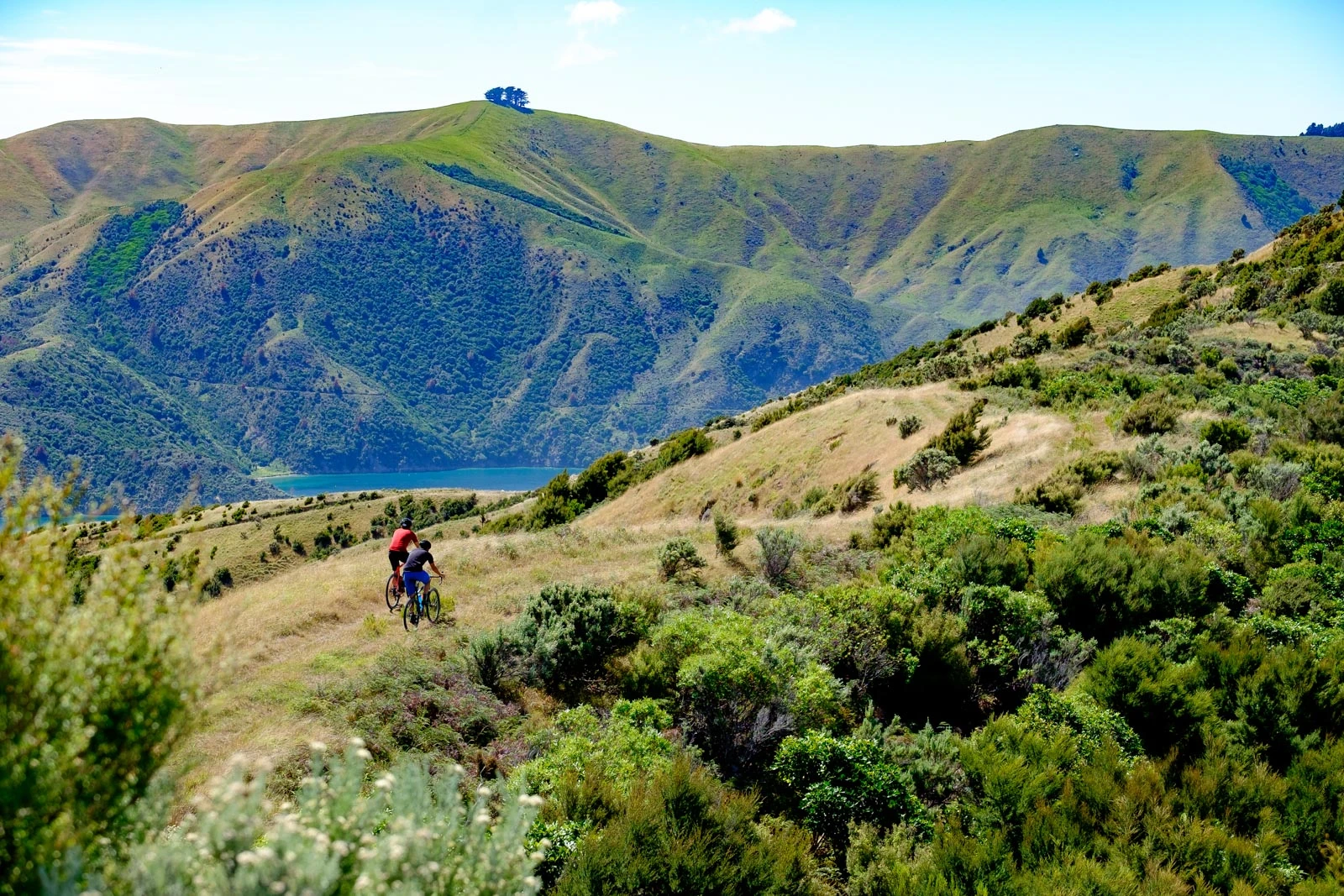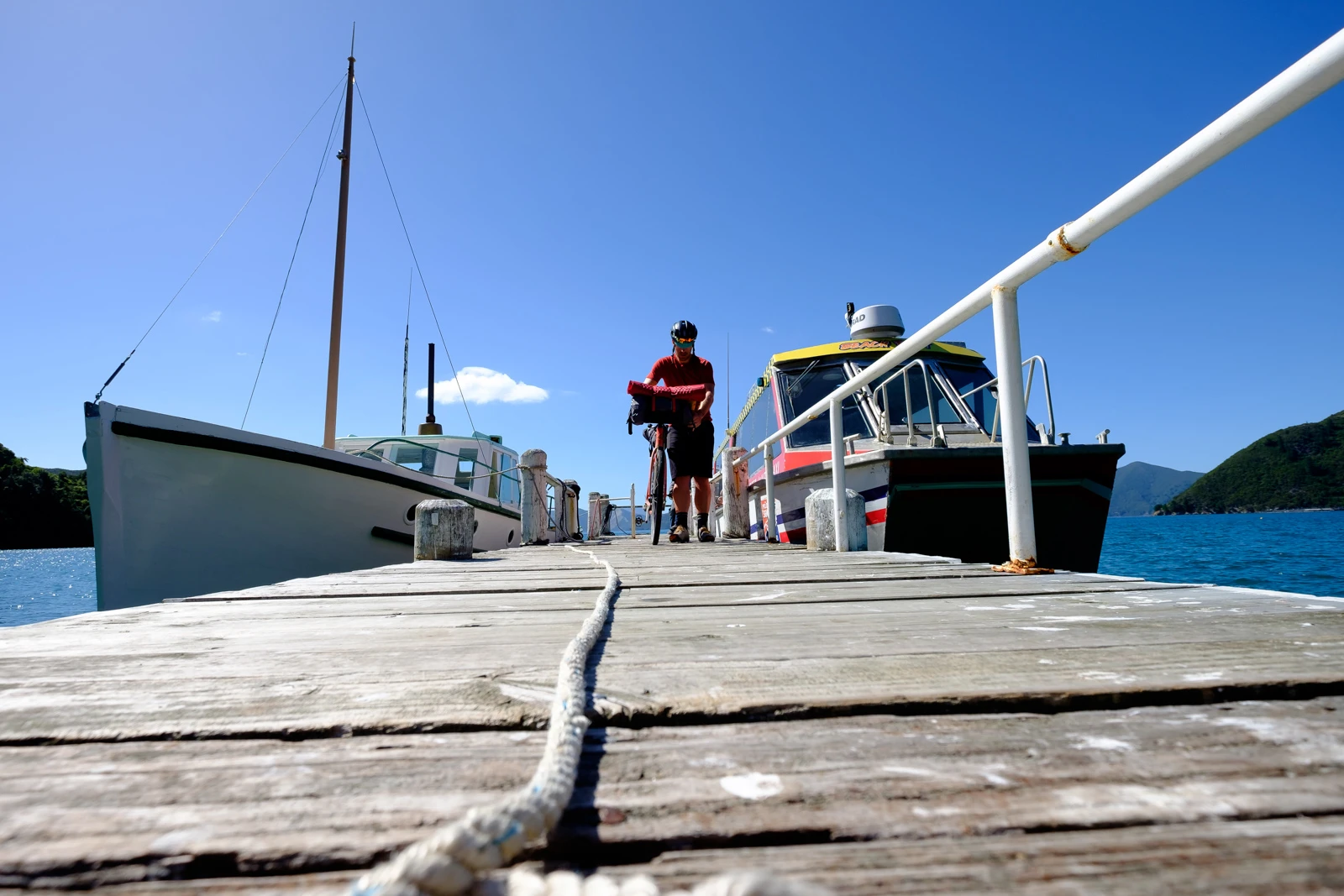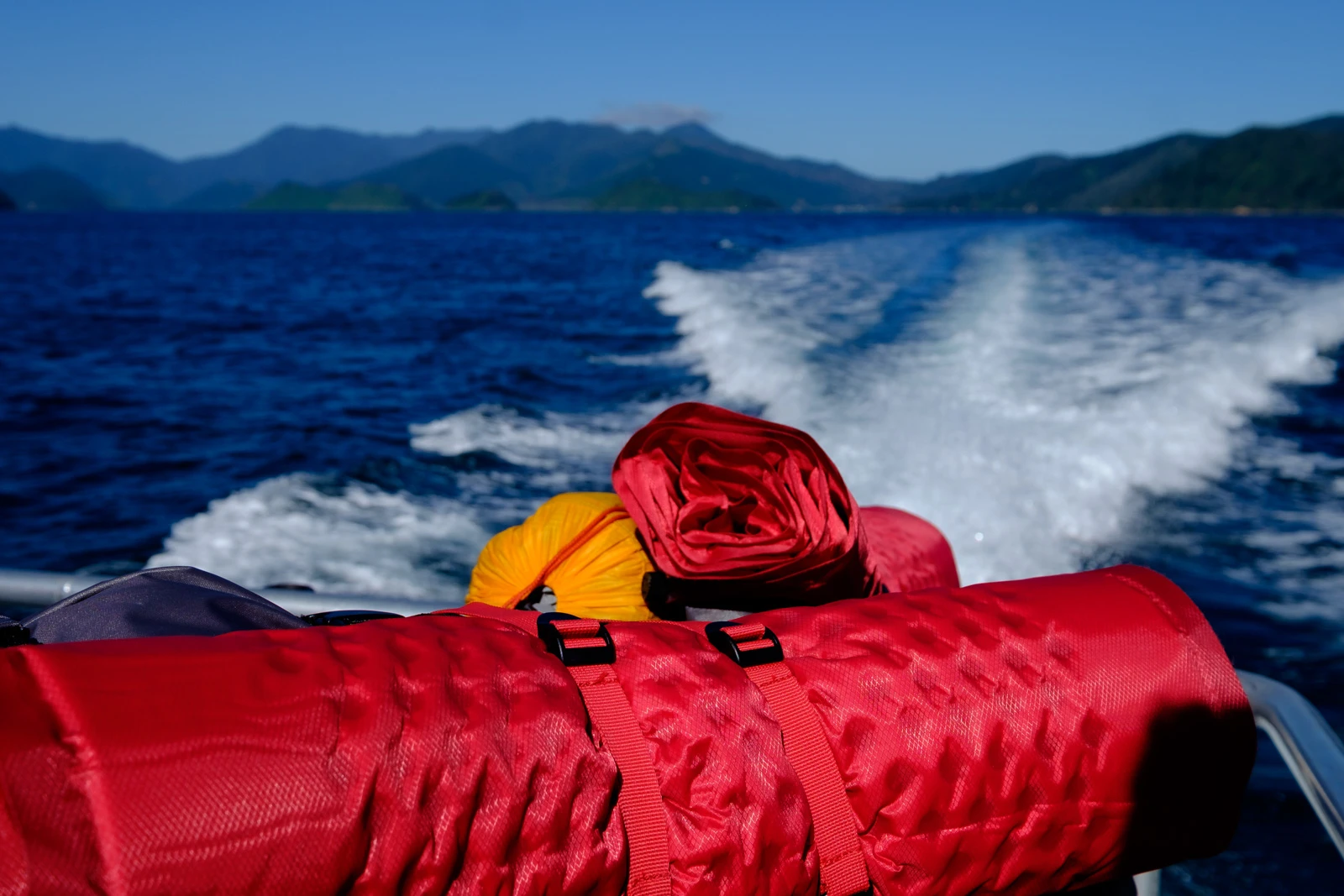Words: Liam Friary
Images: Nick Lambert
Lately, I’ve been searching for riding destinations that are off the grid. This slight obsession has me hyped up at night as my mind and mouse hunt for the nooks and crannies of our stunning shores. This trip came about quickly, well actually a few weeks before we printed this issue, so the timing was super tight! However, the brief was simple; pick a location that is epic and southern. Pelorus Sounds is a small peninsula that lingers off the top of the South Island – a destination just waiting to be explored. I was also tipped off by an insider who lives in Nelson that there were some the stunning gravel roads to be found too. I was sold!
To make this this destination even more special, the journey out to the peninsula was going to be up and over some high alpine tracks. We would then explore the coastline by winding our way to the top of the peninsula via the historic Pelorus Mailboat. Indeed, all the elements to make for an amazing journey. There are many ways to travel through this part of the world but for us it was going to be bike – of course.
In order to get immersed in this area we decided to go fully self-sufficient. This would mean taking everything; tents, sleeping mats/bags, cooking equipment plus anything else we needed to survive for three days. We were also going to be heading over tricky terrain with no mobile reception, so I made sure we also packed a personal locater beacon just incase.
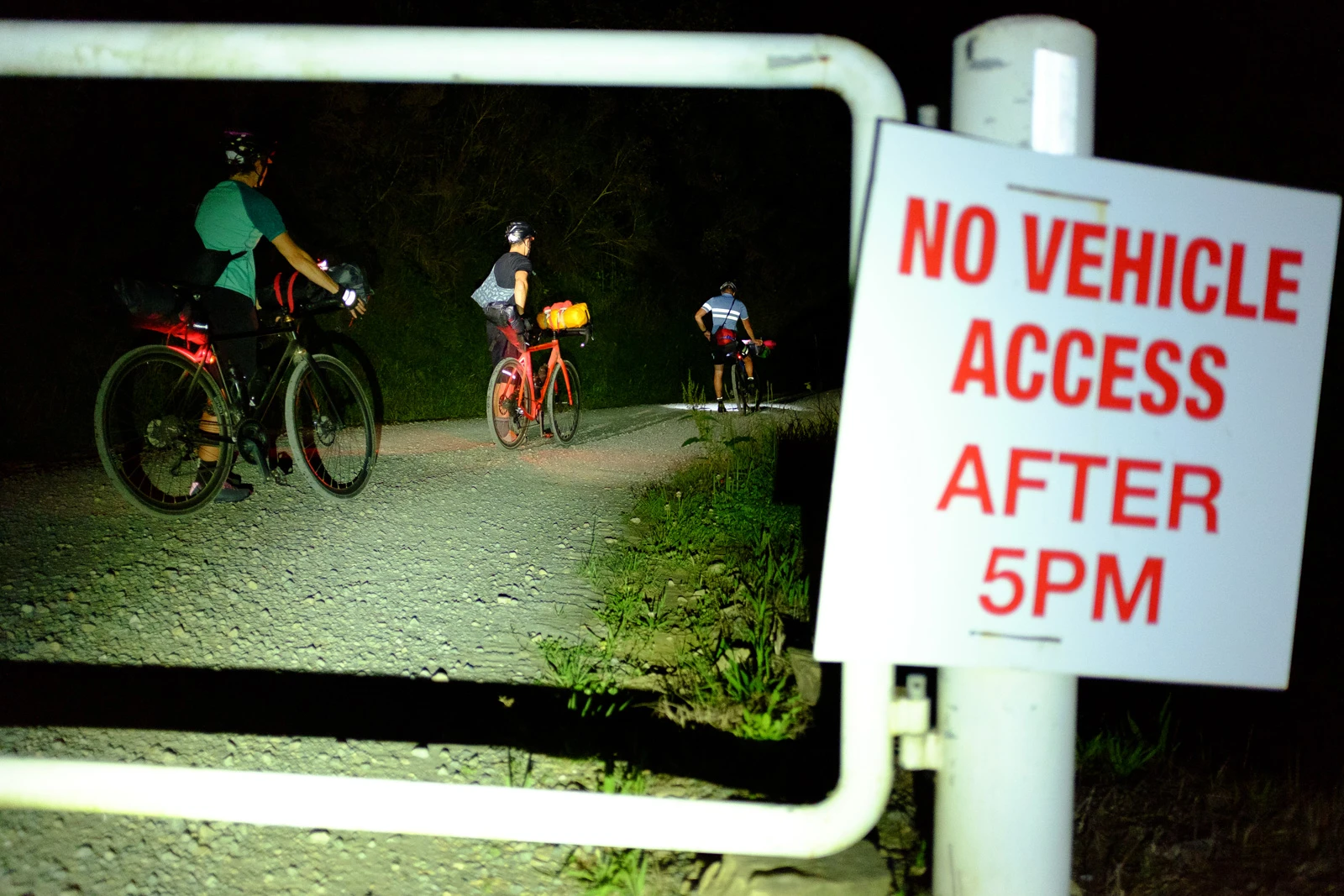
It was going to be a ‘long weekend’ adventure. We met together at Auckland airport from the various places we call home to begin our trip. The adventurers were; Philippa Friary, Nick Lambert, Bob Tuxford and myself. Note; always pick a solid team when going anywhere off the grid – more on this later. We flew into Nelson on Thursday evening and would return home again on Sunday evening. This made our escape long enough to switch off and restore without losing too much annual leave.
Descending into Nelson, I spotted the Pelorus Sounds out the plane window. I was itching to get amongst them. I had been to Nelson twice before but had never explored the sounds. We felt at home at Nelson airport as it is well accustomed to looking after bike packers. Outside the terminal is a bike stand, pump and tools. Perfect – we located our bike bags and began our build and pack mission. We must have looked a sight and soon had a small crowd of interested bystanders asking what we were up to. Amazing how the bike can create curiosity. No surprise really – with bikes, wheels, bags, tents and riding gear everywhere, we did look like a bit of a cycling circus. Note to self; allow plenty of time to set up and pack your bike bags before a big adventure.
After a few final tugs on the bike bags to ensure minimal sway we finally starting pedaling at 8pm. The first stop was the supermarket and then The Warehouse. We needed fuel for ourselves and the gas stove. We picked up a few other essentials – fruit bread, licorice, muesli bars and nuts – all food groups covered hopefully. Nick adds; “Set up your bike full loaded exactly as you intend to ride it and do a test ride before heading away. A spin up the road doesn’t count, you need something rough to check if your load is going to stay fastened to the bike where it’s meant to be. Light ratchet tie downs are useful. We ended up buying some 15mins after starting the ride out of town.”
After a curry and beer warm up, we rolled out alongside the Maitai river, gravel road below and stars above. The gravel soon turned to trail and trail to track. We rode until some of us started to run out of head torch light – finally pitching our tents on the next flat-ish ground we could find at 2am. Bob rolled out his sleeping mat, sleeping bag and chucked the tent over him – not the recommended technique but it worked – true bivy style. The rest of us struggled for a bit pitching our tents in the dark. Getting the tent up was the easy bit – even by the light of the stars, what was tough was trying to get the pegs into the Mangatapu track rock. Nick adds; “make sure your camping gear is good quality. Our Macpac sleeping mats and tents in particular were invaluable – quick and easy to put up (and pack down), and the mats was remarkably comfortable. With lesser quality products the trip would have been hugely less enjoyable” The spot we found on the first night was flat, but comprised entirely of sharp rocks. Think a truck loading bay in a quarry, this was rougher than that. I was concerned that it would be a sleepless night with only a few millimetres of sleeping pad between my body and the rocky ground. How wrong I was – the Macpac sleeping mats seem to punch above their weight in how they disperse a bodies weight and mitigate the rough ground. I can honestly say I never even felt a single rock when laid out in my tent!”
That first night we covered 18km with around 500m of climbing in three hours! Safely tucked away in my cosy tent I went to set an alarm for an early start to ensure we didn’t miss the boat the next morning. My phone read 2:20am, I set the alarm for 5:40am hoping that the sound of the waterfall behind us would lull me to sleep and not keep me awake.
Startled by my alarm, I woke, pulled on my long johns and searched for the tent zip. Time for a brew. It was still pretty dark, but I could just see a few mountain peaks starting to emerge above us. At this point, I realised we were in steep, steep country. No flat white for breakfast today. Nick says; “Camping added a whole other dimension to the trip. Free camping on the first night was a highlight for me. Although we rode a couple of hours longer than planned and then were only able to find a barely habitable spot to pitch our tents at 2am. But the feeling of being out in the middle of nowhere, and the tranquility of our location when waking up to Tour Leader’s gentle yelling ‘Get up, time to roll out!’ makes for awesome memories.”
After searching for the flint, I lit the stove and boiled the kettle. I pressed some fresh coffee with my American Press. Four thick, dark coffees to go. This would get us ready for the challenges ahead. I knew it was going to be a long haul. We needed to get up over the Maungatapu Track (800m above sea level) and into Havelock before 10am in order to catch the Mailboat. We packed up and pushed our laden rigs onwards up the steep track. Nick says; “Some of the climbs were ugly, and long, and did I mention they were ugly? But, the reward for getting up them was not only the spectacular viewpoints we reached, nor the relentless progress towards our goal destination each day, but the satisfaction of banking those vertical metres into our accounts. We reached the summit after several hours of pushing with a touch of riding.” At one-point Bob said; “We’ve traveled 2km in half an hour.” I think we summited around 10am. Given we still had about 30km of riding until Havelock and the Mailboat, the day’s plans needed to be altered. We chewed on a piece of raisin bread as we discussed option B, C and D, staring off at the rows of alpine peaks with sunlight creeping through.
With new plans in place, we descended down a rough, rocky but incredibly scenic track. High above the tree line, we plummeted back into the forest. Black beech was abundant on the steeper slopes while hard beech was more common on the lower slopes. Nick and Bob, both former high-level MTB riders danced across the tough terrain while Philippa and I walked in parts. The path opened up as we got closer to the bottom and the rocky track began to resemble a gravel road. The road sent us out alongside the Pelorus river. The rapids, rocks and milky turquoise water was definitely southern.
We popped out onto Pelorus Bridge, amongst a crowd of backpackers and campervans. Pelorus Bridge is home to a variety of forest birds, both native and introduced. Although not always easy to see, their birdsong can often be heard. The Te Hoiere/Pelorus River drains a large, mostly forested catchment. The water is of a high quality and provides valuable habitat for many native plants and animals, as well as trout. Philippa remembers her Poppa heading up the Maitai fishing for trout when she visited Nelson as a girl. He would always come home with a couple of rainbow trout wrapped in newspaper and some stories to tell.
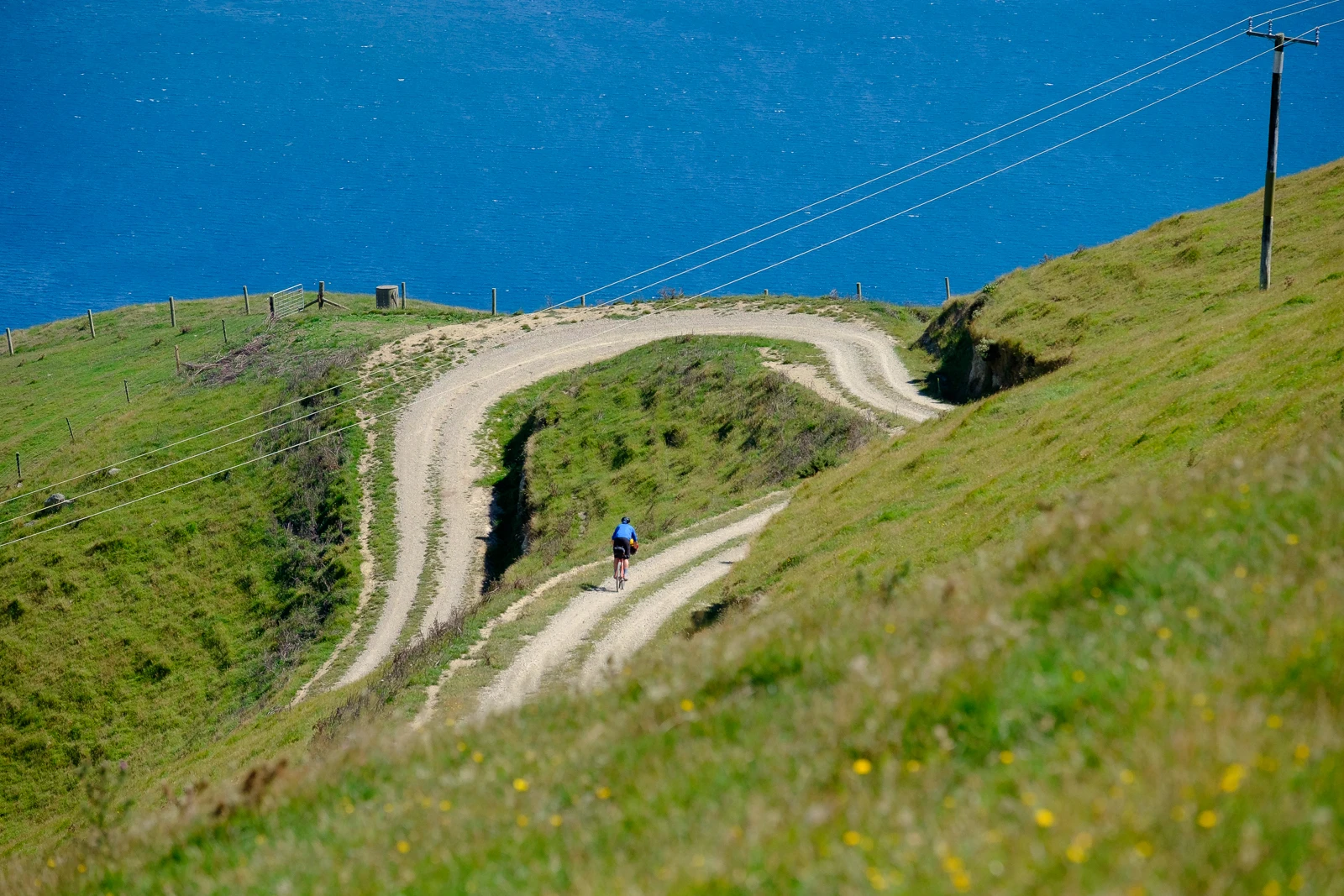
We walked into the Pelorus Bridge Café a little jaded. We grabbed cold drinks, pies, iceblocks and coffee. Once replenished, we had a planning conference. There’s nothing better than an old-school map on the back of a brochure to explain the rest of the day’s proceedings. By this time it was 1pm. Note; give yourself plenty of time for the bikepacking leg before a transfer trip, expect the unexpected. We hatched a plan to ride to the days end destination; French Pass. First we needed to negotiate a main highway, Rai Valley, Okiwi Bay and then we’d be out in Pelorus Sounds. The final section from Okiwi Bay into French Pass would encompass 40km of mainly gravel roads with around 1200m elevation gain.
We rode in and out of Rai Valley, my phone came into reception and I was bombarded with messages. I ignored most of them (as I was busy?!) but responded to the text from the Pelorus Mailboat skipper, it read; “No sign of you this morning. We are going to have to leave without you. You don’t have signal, so you must be too far away.” Clearly, we missed the boat. After chatting with a local farmer, we climbed up and over into Okiwi Bay. Nick says; “Travelling on a loaded bikepacking rig seems to break down the barriers with strangers only too happy to have a chat. Some of the locations we got to were extremely remote, and the people that lived there were every bit as colourful as you would expect.”
Rolling out onto Pelorus Sounds there were sea views from every angle. The top to bottom views of steep, rugged bush mountains dropping into the sea were incredible. The road traversed the spine of the peninsular. We were now in our 8th hour of riding. Nick says; “A good attitude is essential. This is something which is easy to say, but not so easy to accomplish when the going gets tough. There were definitely moments when I was not enjoying the sweltering heat as I labored up a slightly-too-steep-for-my-gearing climb. At times like that it’s invaluable to have a riding buddy to suffer alongside. Or know that you’ll be regrouping in 30 mins to tuck into those gourmet liquorice bars you bought at the last outpost of civilization you passed through. And talking about food, I think there are three kinds of food that apply to bikepacking: On the bike, sensible. This is your pre-prepared nutrition mix, energy bars, wholesome foods. On the bike, luxurious. This is the chips, the chocolate, the liquorice. You wouldn’t fuel on these on their own, but with the number of calories being burned it’s great to have these ‘treat’ kind of foods. Camp food, opportunist and functional. For dinner and breakfast there is a need to get quality food in to replenish the day’s activities and prepare for the next but carrying everything with us and not having access to any kind of shop at camping spots meant some compromises. From using water instead of milk in our muesli, to strapping frozen sausages to the outside of our packs to thaw during an afternoon ride to our campsite.” After riding through a high pass with almost no visibility we finally rolled into French Pass, the end of the road and peninsular at around 7:45pm. We high-fived each other on the pier, exhausted but stoked with the day’s effort. We covered 102k with 2600m climbing on mostly track and gravel roads in 10 hours! Not a bad day in the office.
Setting up camp right on the beach was something special. The sun ducked behind the horizon and we fired up the gas stove. Yes, I was hungry but more thirsty, no I didn’t want water, I needed a bloody beer! I befriended two campervan owners, earlier on the pier, and jokingly asked if there was a local pub. (Of course, there wasn’t and even the local store was only open an hour per day if that). They pulled out four beers from their fridge in their camper and said; ‘here you go, these are well deserved.” I swear, the beer has never tasted so good.
We woke up to the melodic sound of the sea lapping on the beach. I prepared the coffee and boiled the kettle – Philippa got the pasta and muesli ready. Yes, this was breakfast bikepacking style, use up what you have. Don’t ride with the extra weight.. Nick says; “Take earplugs. We had one night with rowdy campsite neighbours who reduced our hours sleeping when we needed them most.” In order to get to our next night’s campsite, we needed to traverse the spine of French Pass again, this meant more amazing views but arduous climbing. Whilst we were faffing around getting our rigs and bags in order, Nick (who’s always organized) decided to ride up the first hill earlier than us. Nick says; “It seems obvious, but your crew is a huge factor of your enjoyment of your adventure. I was the slowest climber on my trip, but not once did I feel any pressure from the fitter riders. I did try to redeem myself by letting it rip on a few of the descents, but really, there were no egos that needed to be stroked and we were all out of our comfort zones at some stage.”
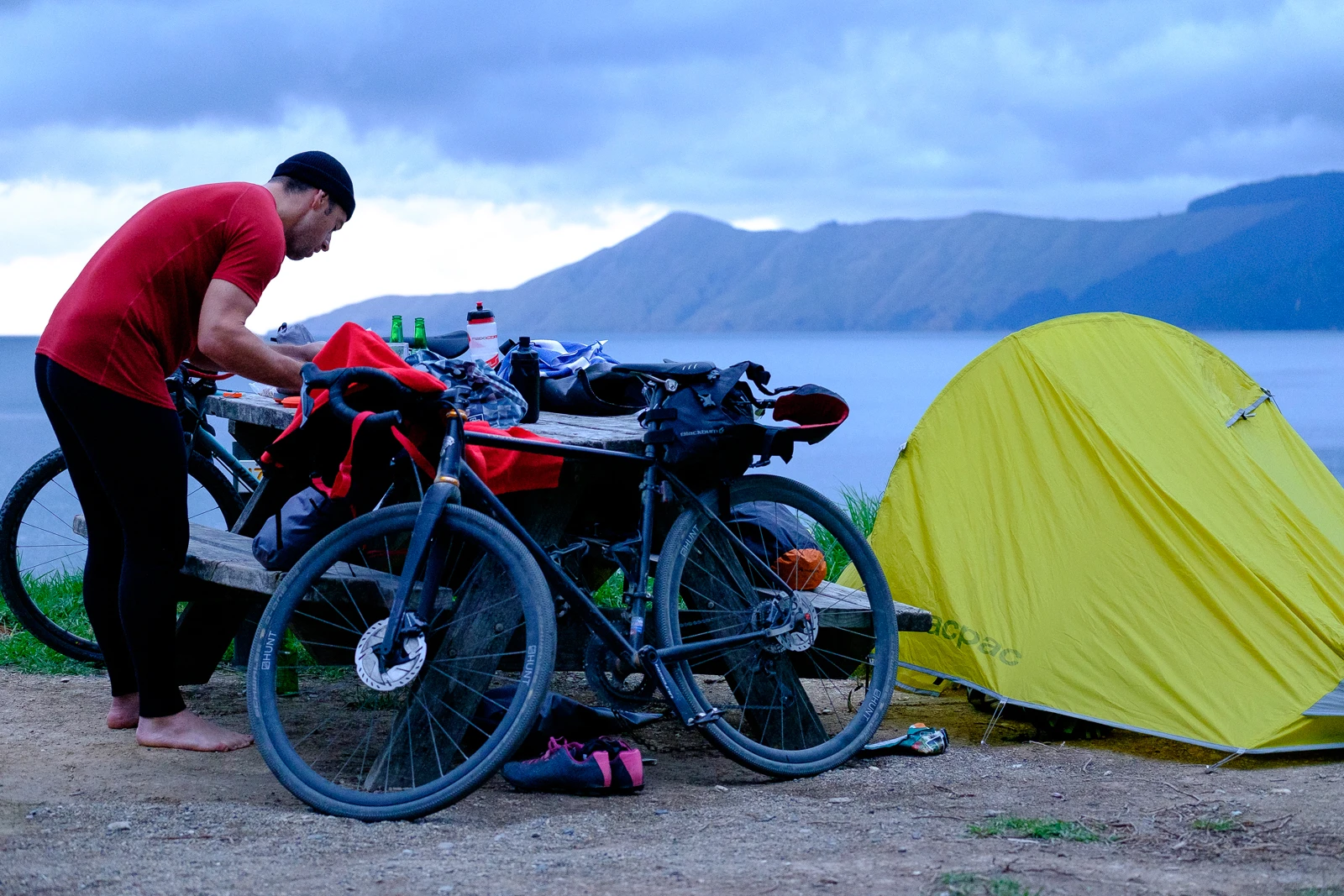
This was an easier day on paper, but we had the two previous days riding in our legs. As we traversed the ridgeline back along the same road, the scenery still had us all in awe. The landscape and seascape was ever changing. We were on such a thin slice of land mass that the clouds and wind swiftly came and went. At one point, the wind gusts were so severe that Philippa had to walk her bike. We rode back to the only shop in the remote region, Okiwi Bay. Once again, we were reunited with the lovely store owners. We felt like locals, as we all stood inside the shop chatting and sipping drinks straight from their fridge. Straight after finishing lunch, we were thinking about dinner. With sausages bought and strapped to our bikepacking bags (to thaw out) we pedaled over the hill and into Elaine Bay. We covered 57k with 1600m climbing.
Elaine Bay is in the Tawhitinui Reach (a branch of the main section of Pelorus Sound), it plays host to a small fishing and aquaculture port. Many smaller fishing vessels and large mussel boats regularly dock at the port. The main product here is green lipped mussels, for which Pelorus Sound and its main port Havelock are famous. Many of the surrounding bays contain mussel farms, which are a large employer for the region.
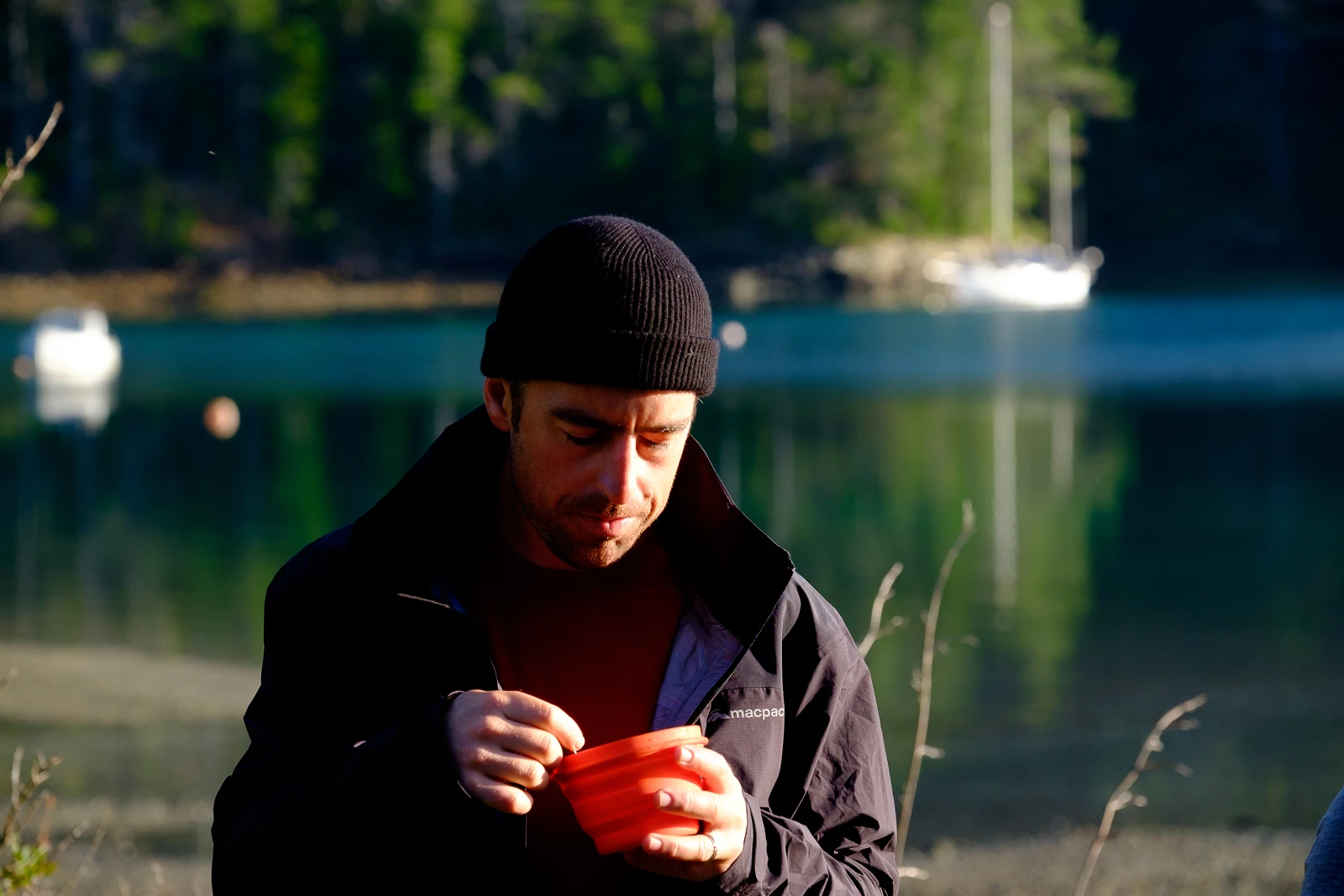
That night we gourmet meal that consisted of sausages, white bread and tomato sauce. Dessert was peppermint tea and a gingernut or two. We watched the sun go down, saw the stars come out and then hit the hay. The routine of camping; sleep when it’s dark, wake when it’s light. Ah, the simple life.
In order to take in the Pelorus Sounds, we needed to see it by water. We were all toast from the previous days of riding. A boat trip up to Bulwer (north Pelorus Sounds) with a short adventure ride was the recovery medicine. Deano, from Pelorus Sounds Water Taxis was our skipper, van transfer driver, tour guide and all round good kiwi bloke. The salmon and mussel (Marlborough has 750) farms astounded us, Deano grabbed a few fresh mussels for us to try. They tasted divine, fresh outta’ the sea. We parked up on Bulwer’s (seriously, google it) pier. The rickety boards of the jetty, makeshift bar and sheep standing on the foreshore waiting to greet us paints the picture of ‘Bulwer. I asked the local farmer; “where’s the road” he told me; “I shouldn’t be talking to you if you’re from Auckland.” He then mumbled and pointed his finger up the hill. We rode up and over the divide and asked the boat to pick us up on the other side. The perfect recovery adventure spin; riding from point A to B with a boat at the end! Deano, dropped the hammer back up the Sounds, we ducked into a secluded bay for some ‘mean bombs’ and then docked in Hastings.
A van airport transfer back to Nelson and we were parked up at Eddyline for pints and pizza in no time. Packing like pros, whilst toasting the epic adventure was a real highlight. With the suffering over, memories engrained and thoughts of; did we really just do that? and what shall we do next? Nick says; “Just getting away. Bicycles are wonderful devices at any time, and the freedom they impart when venturing truly off grid is a special feeling. From the ever-changing landscapes we travelled through, to the demanding climbs, to the fun-filled descents, to the peaceful campsites – there is no time to dwell on what awaits at home. No bosses, bills, chores, errands or family commitments. It’s a chance to really unplug and get away for a while, returning to regular life with a fresh attitude. Four days away seemed like a two-week holiday with everything we packed into it.”
